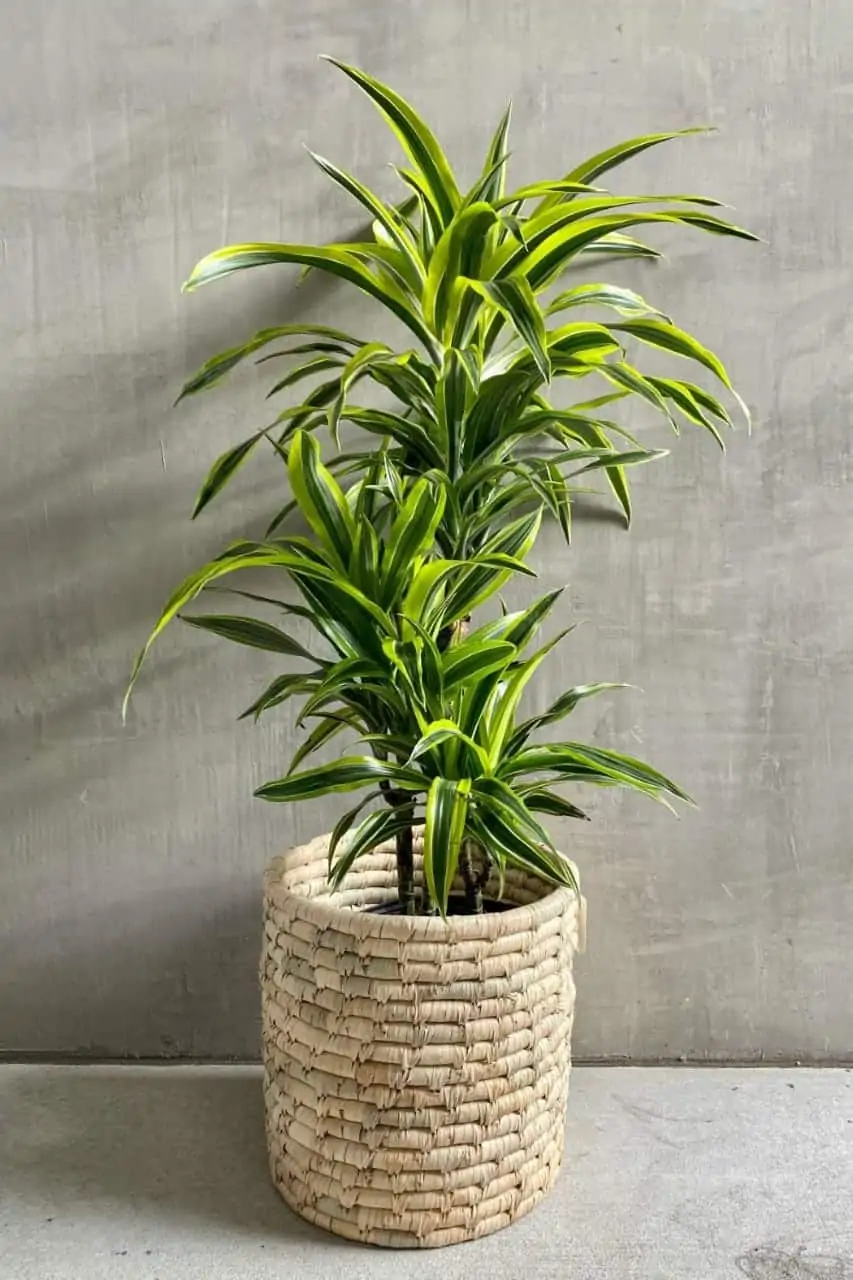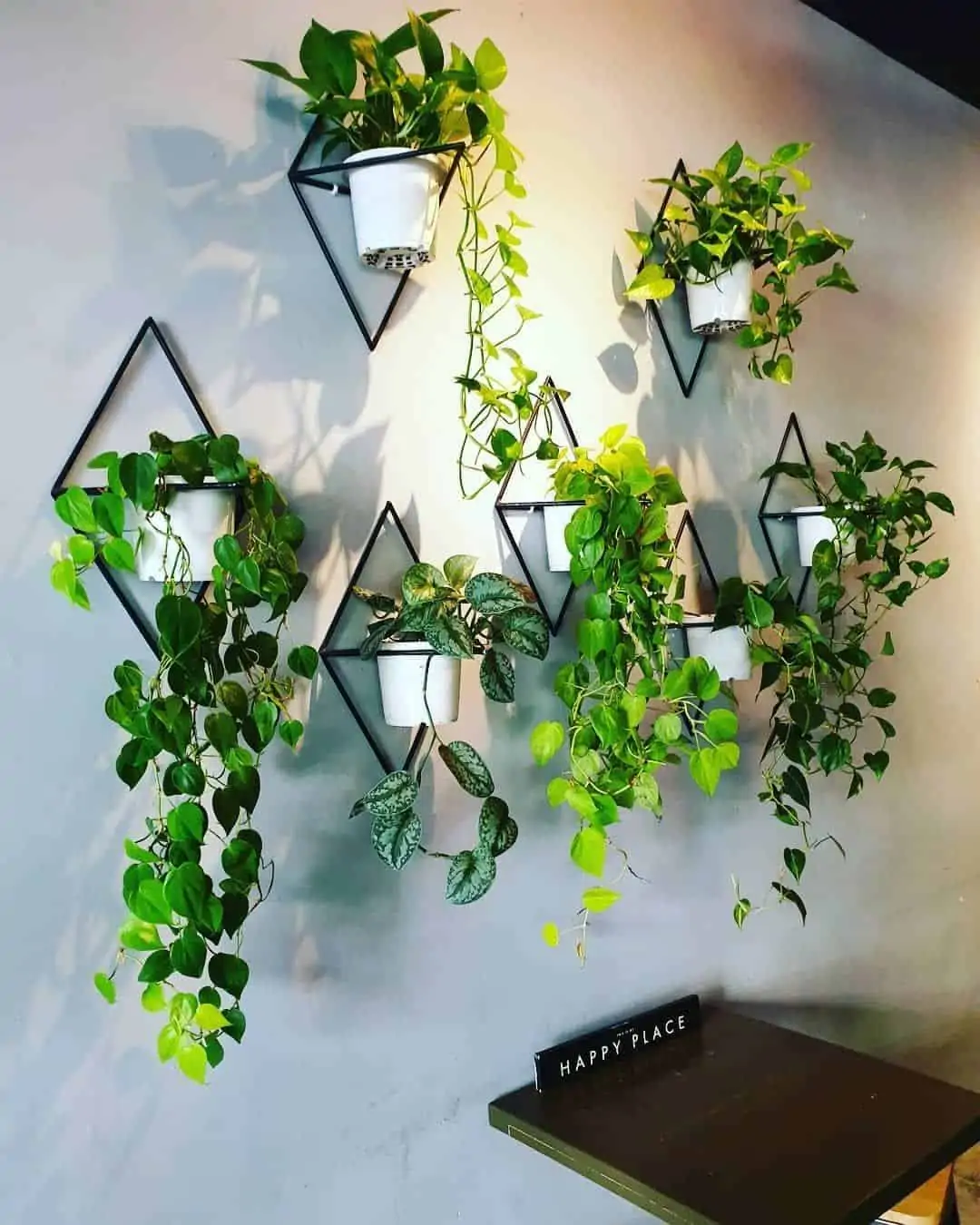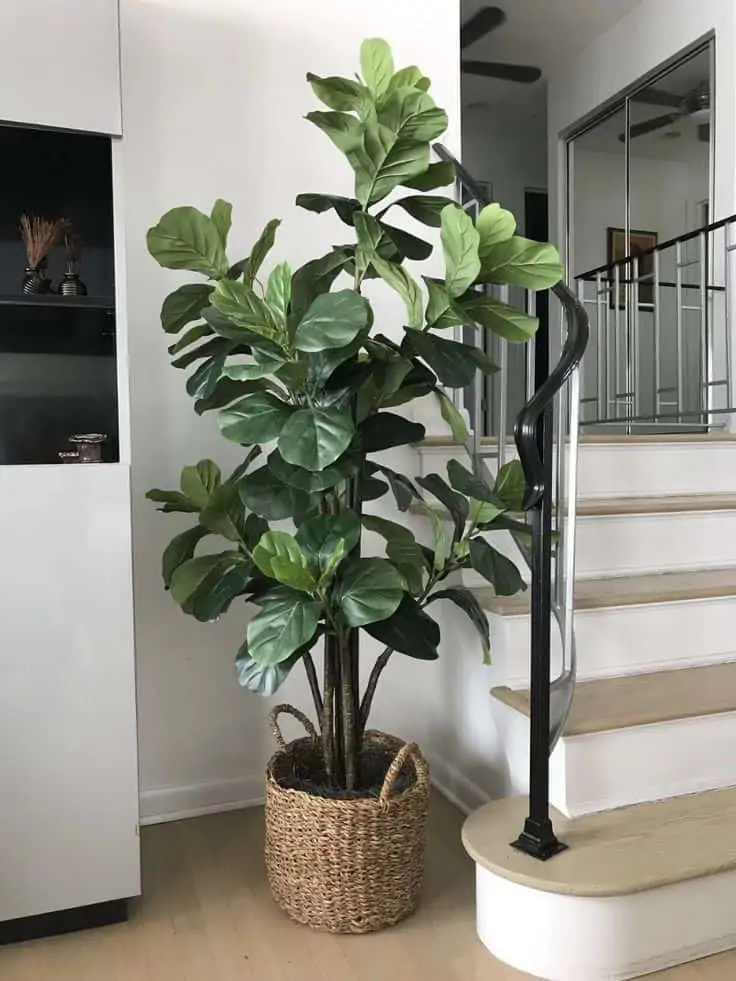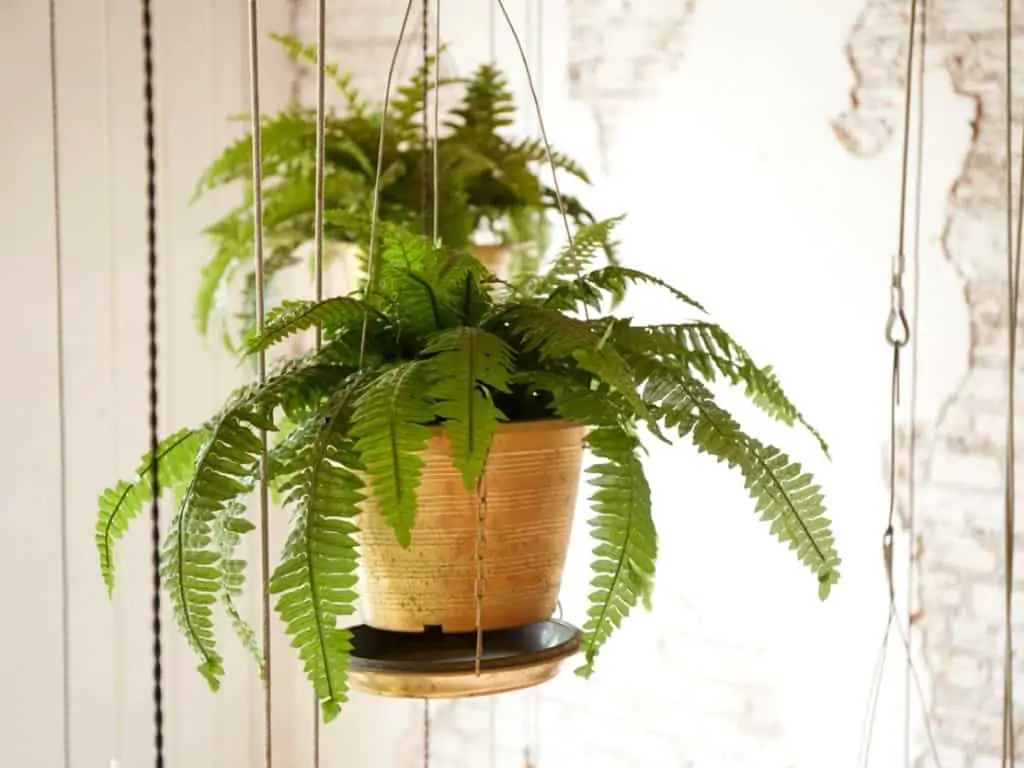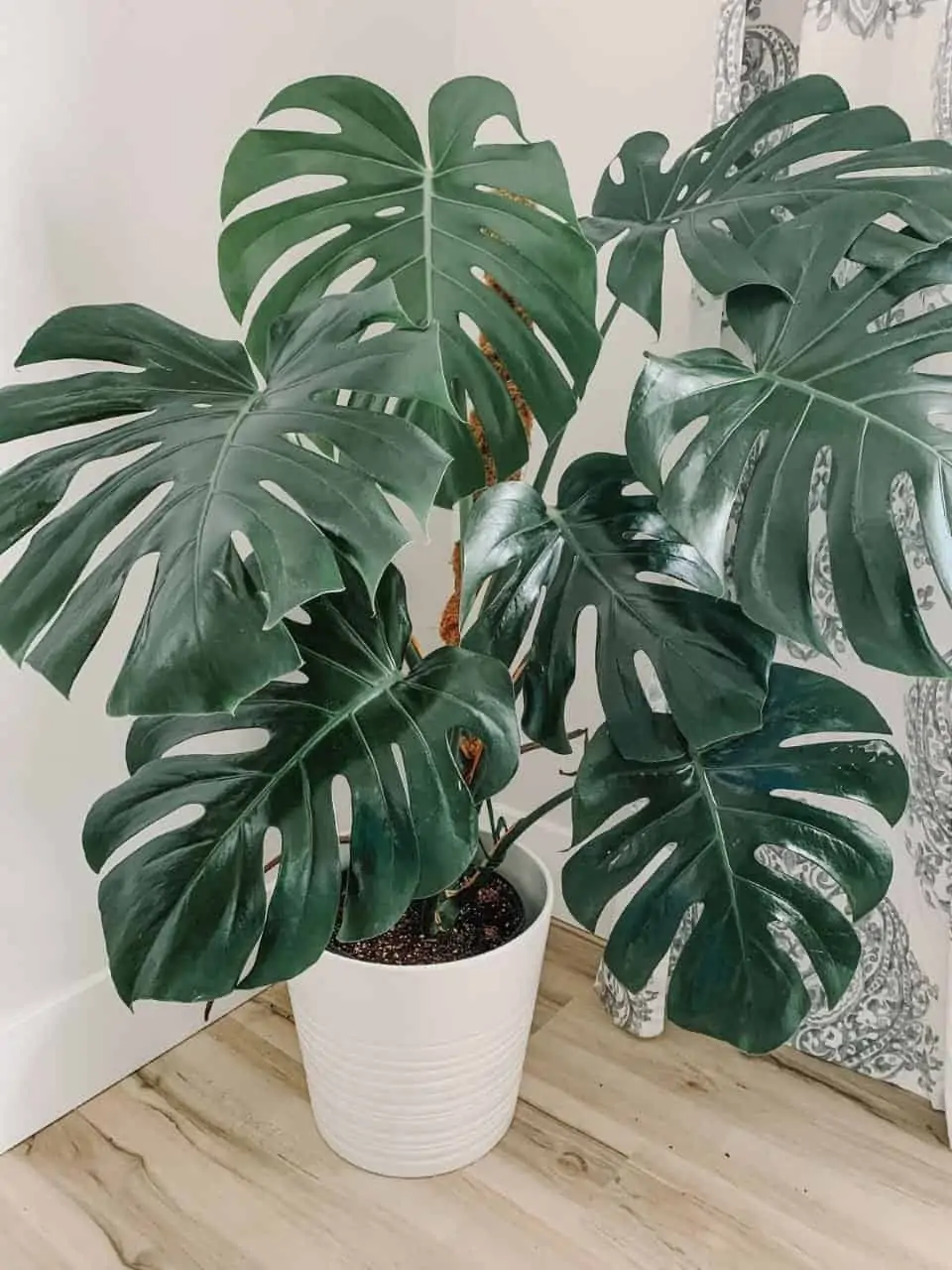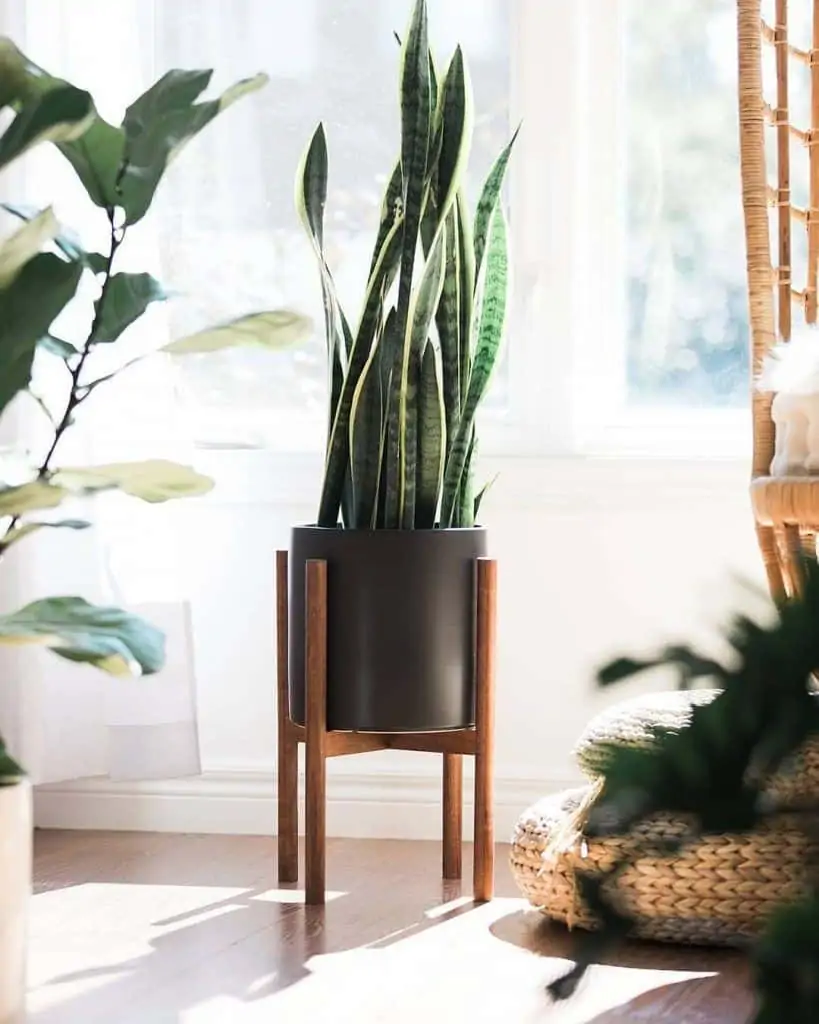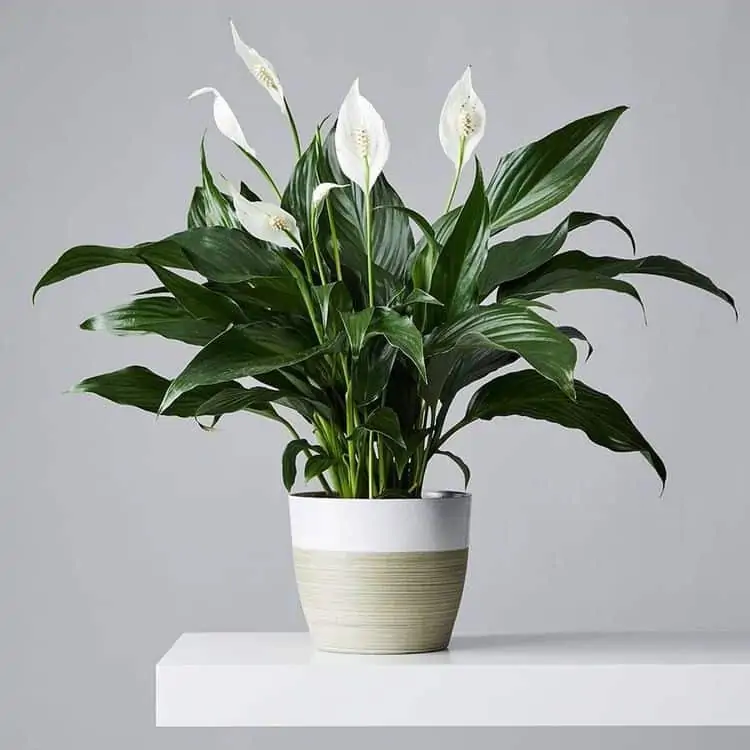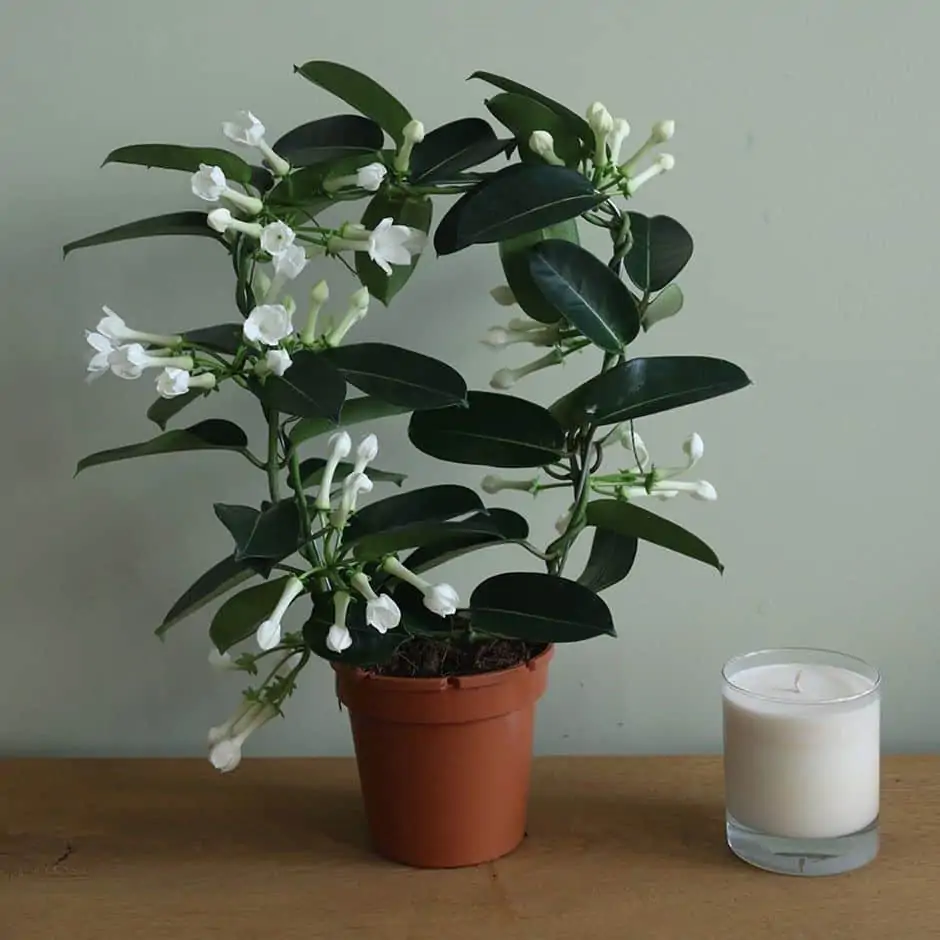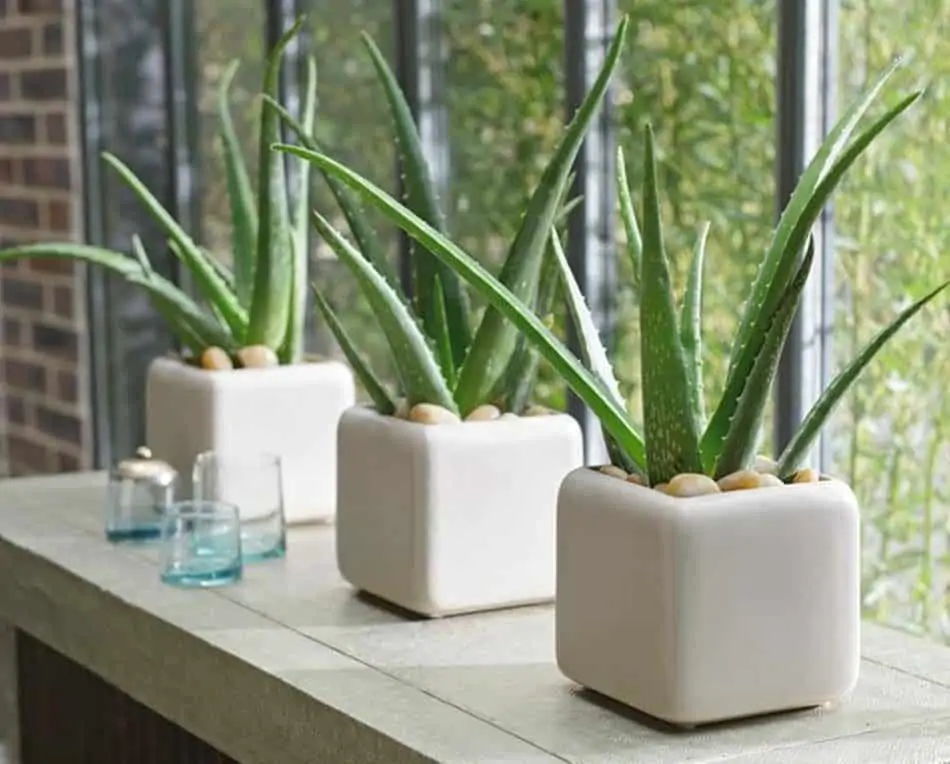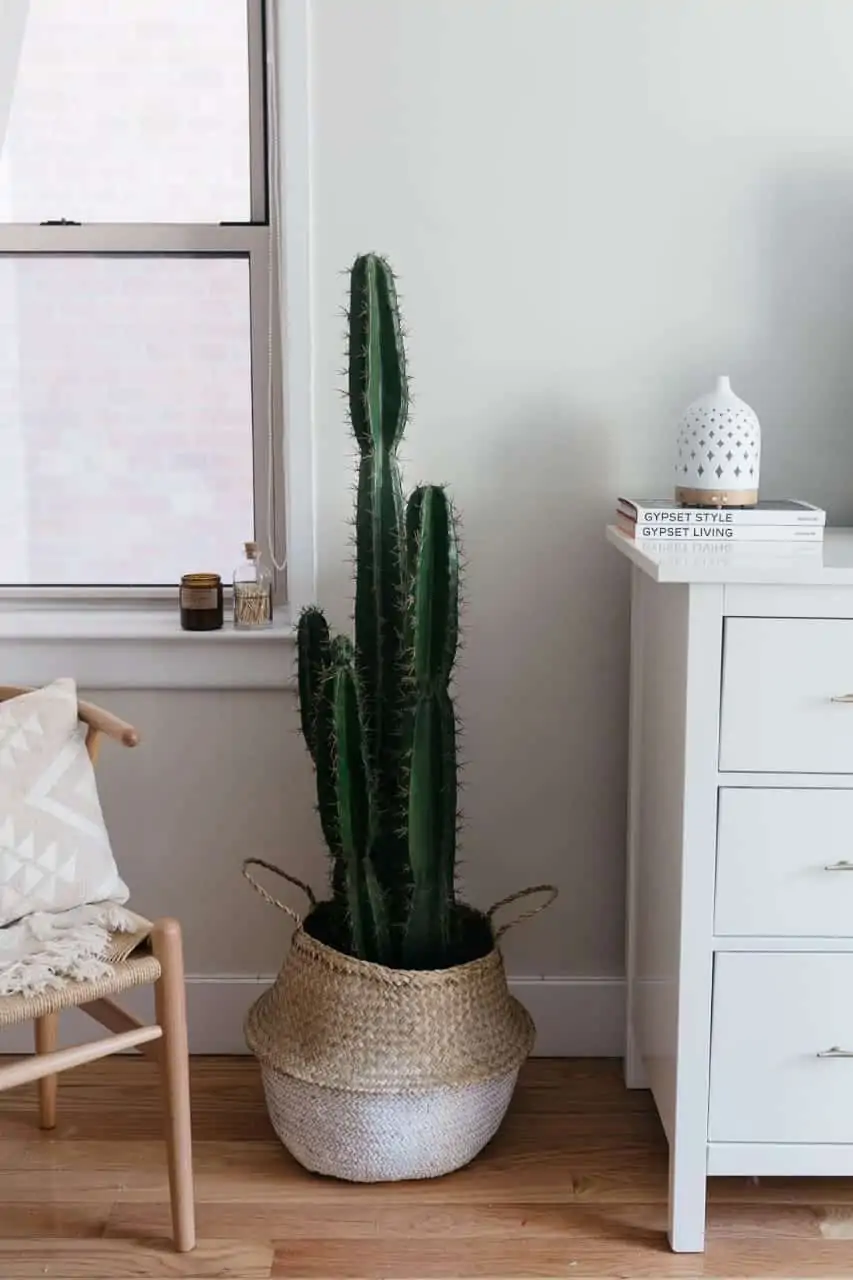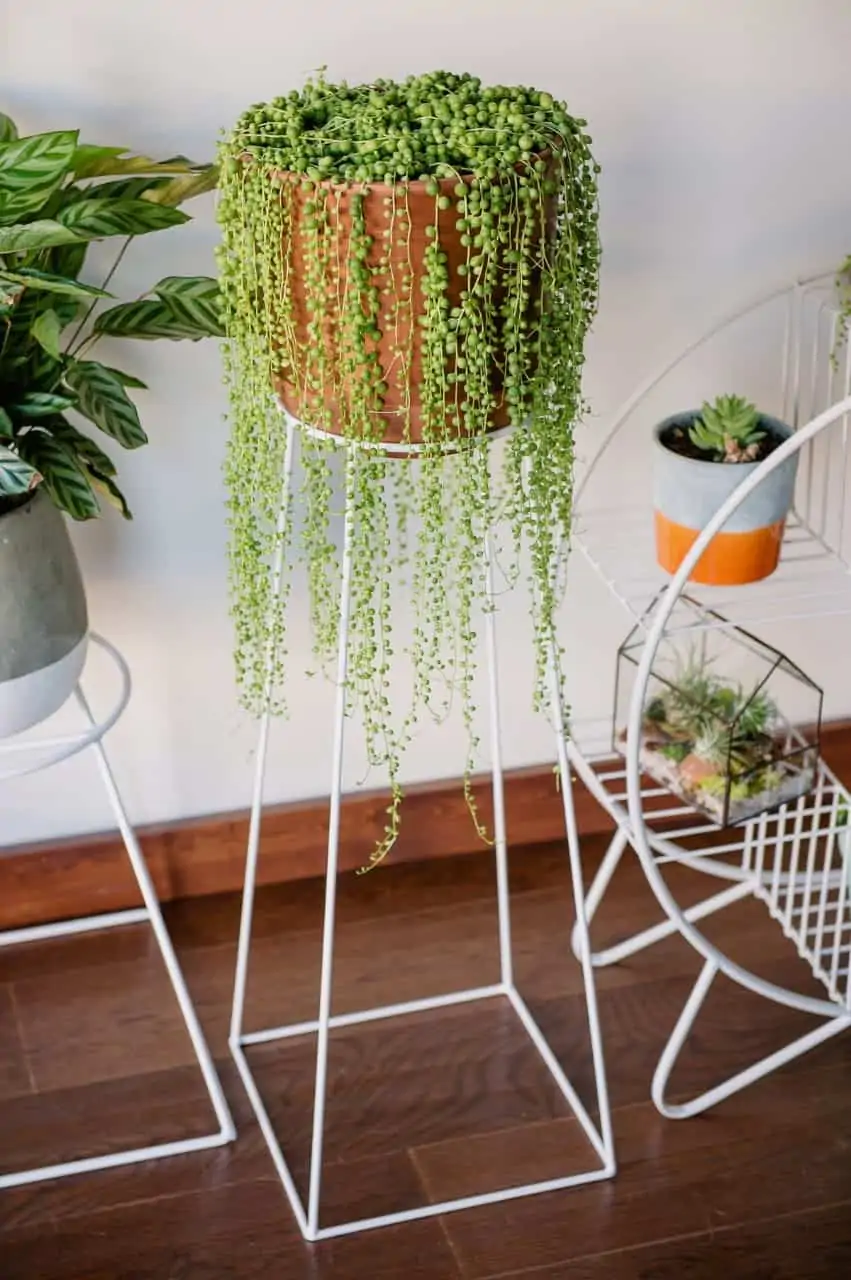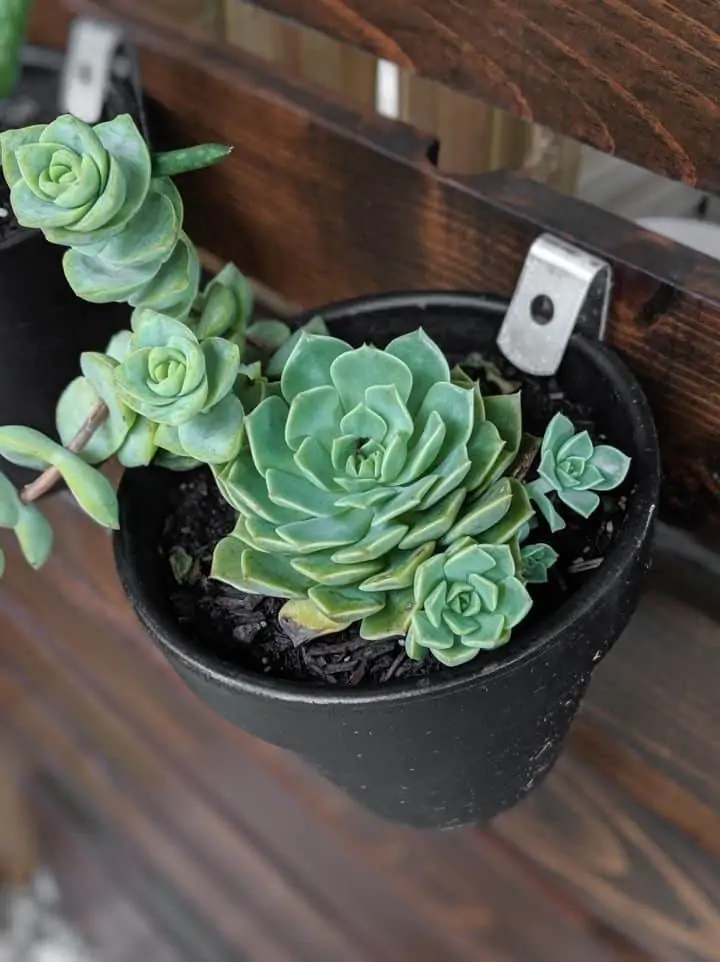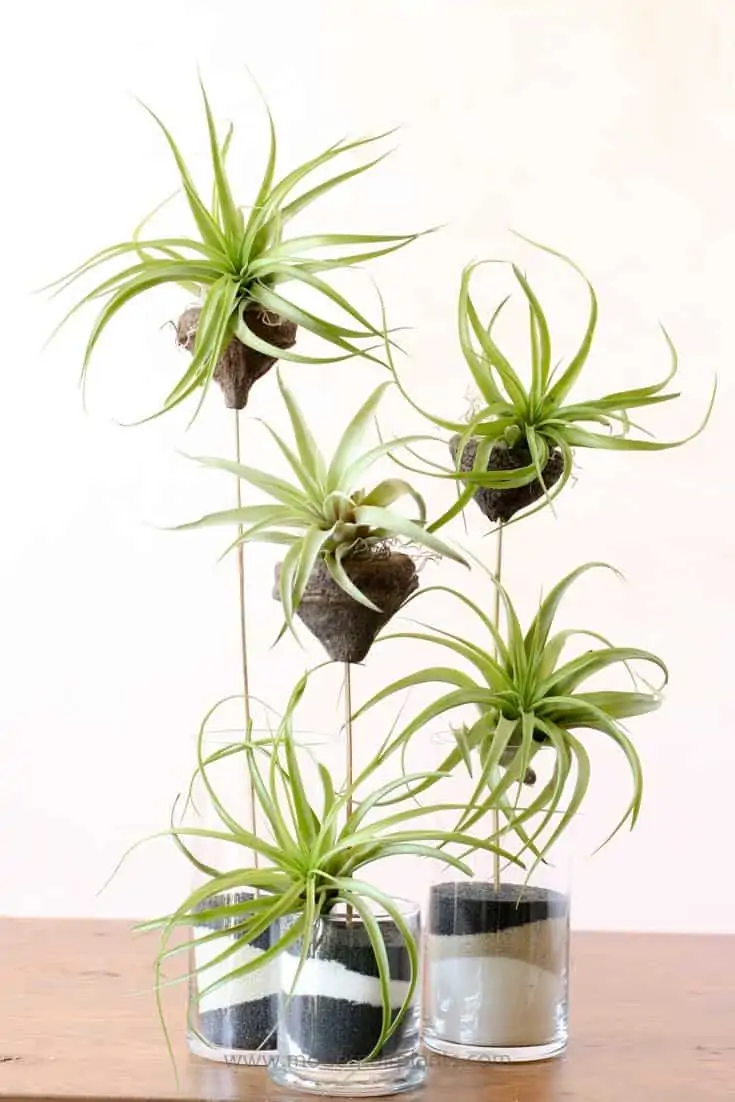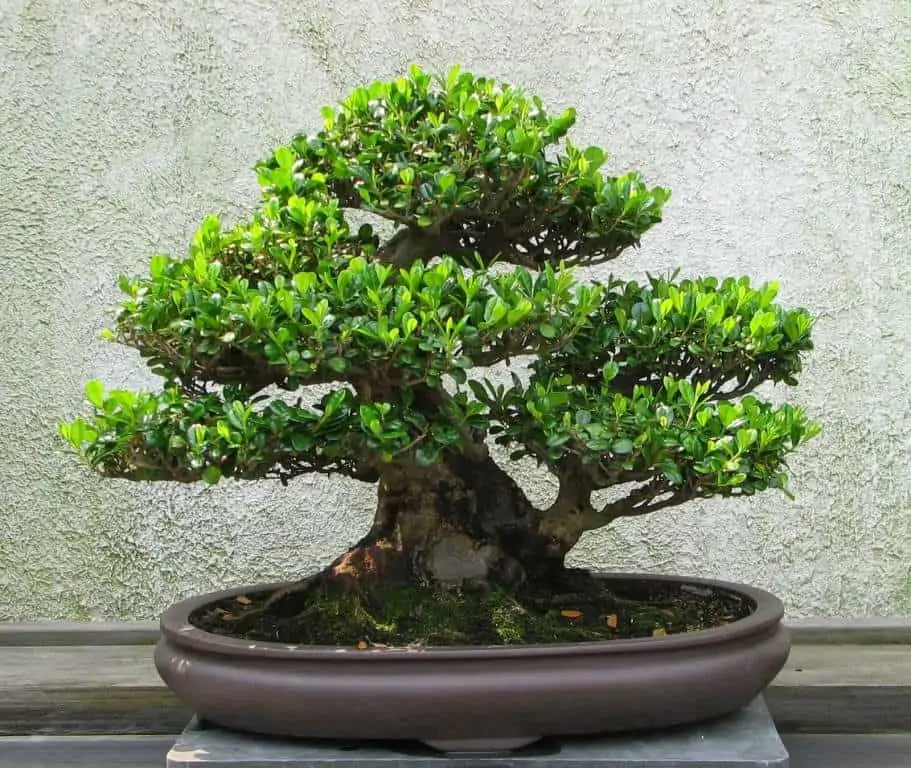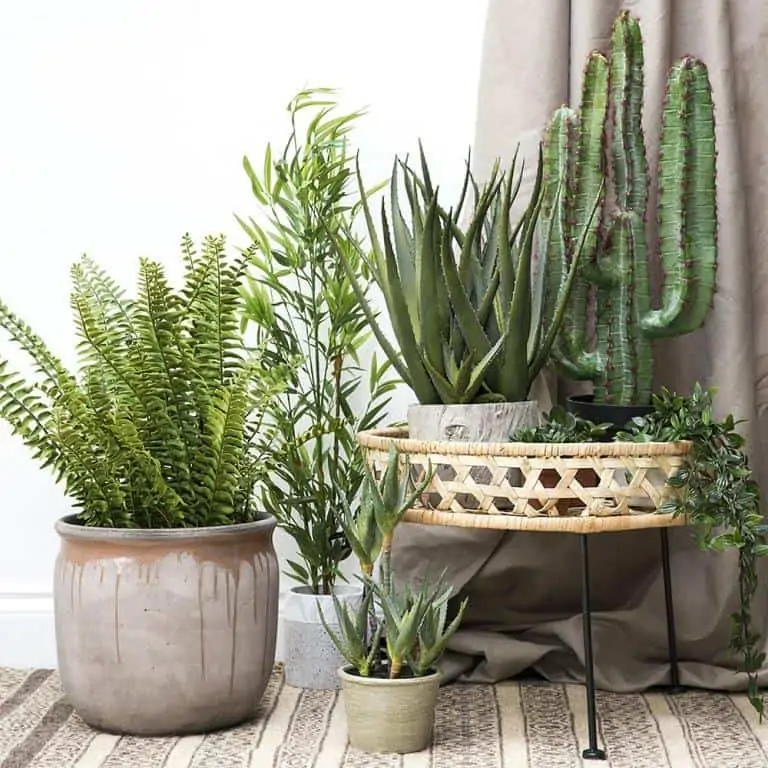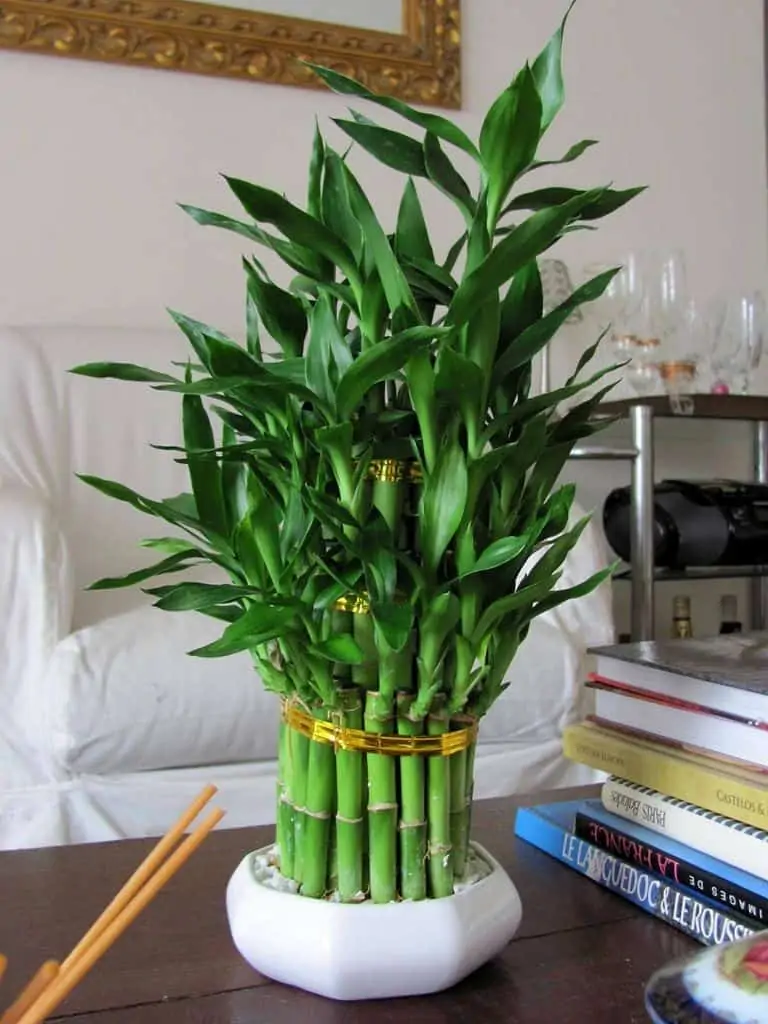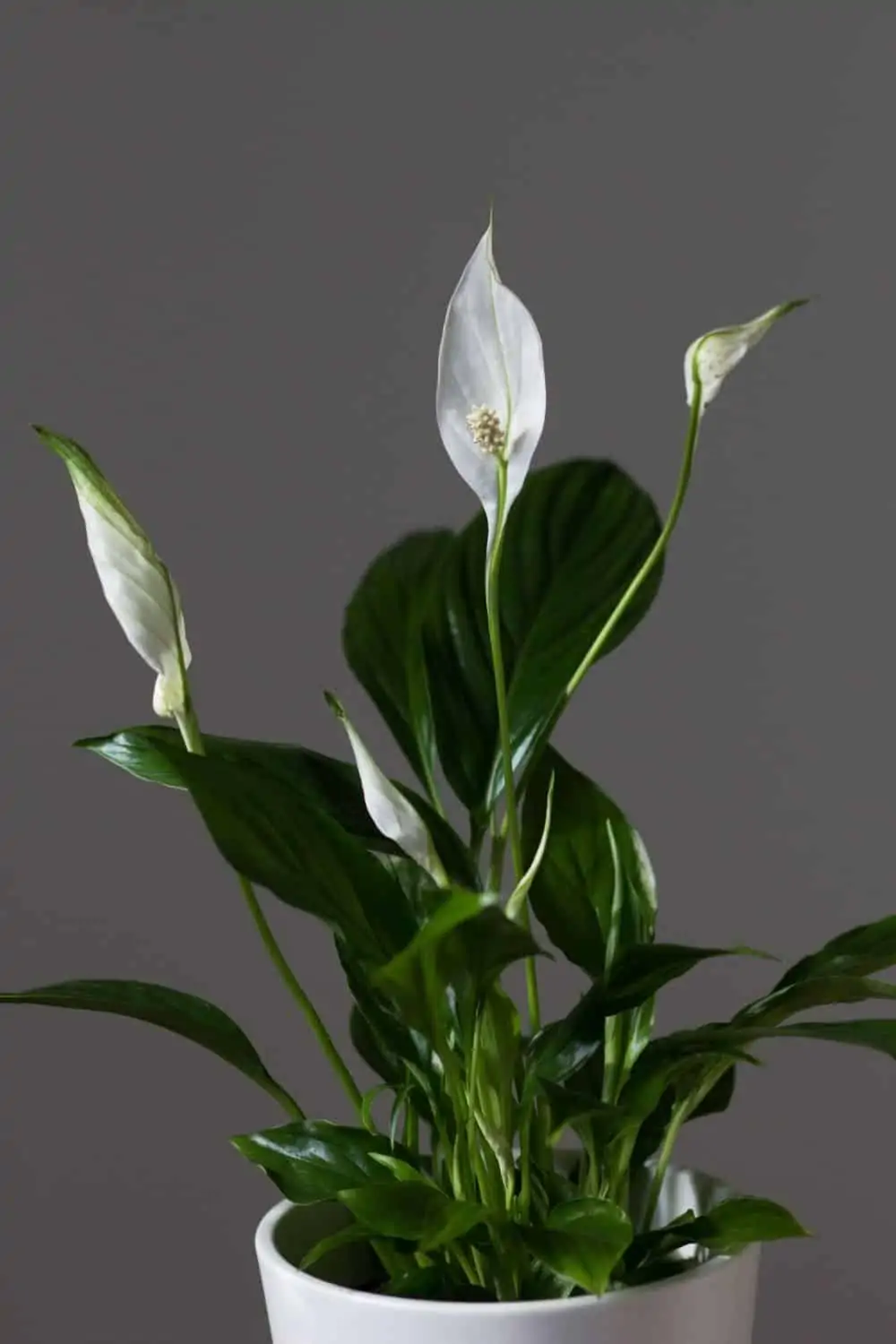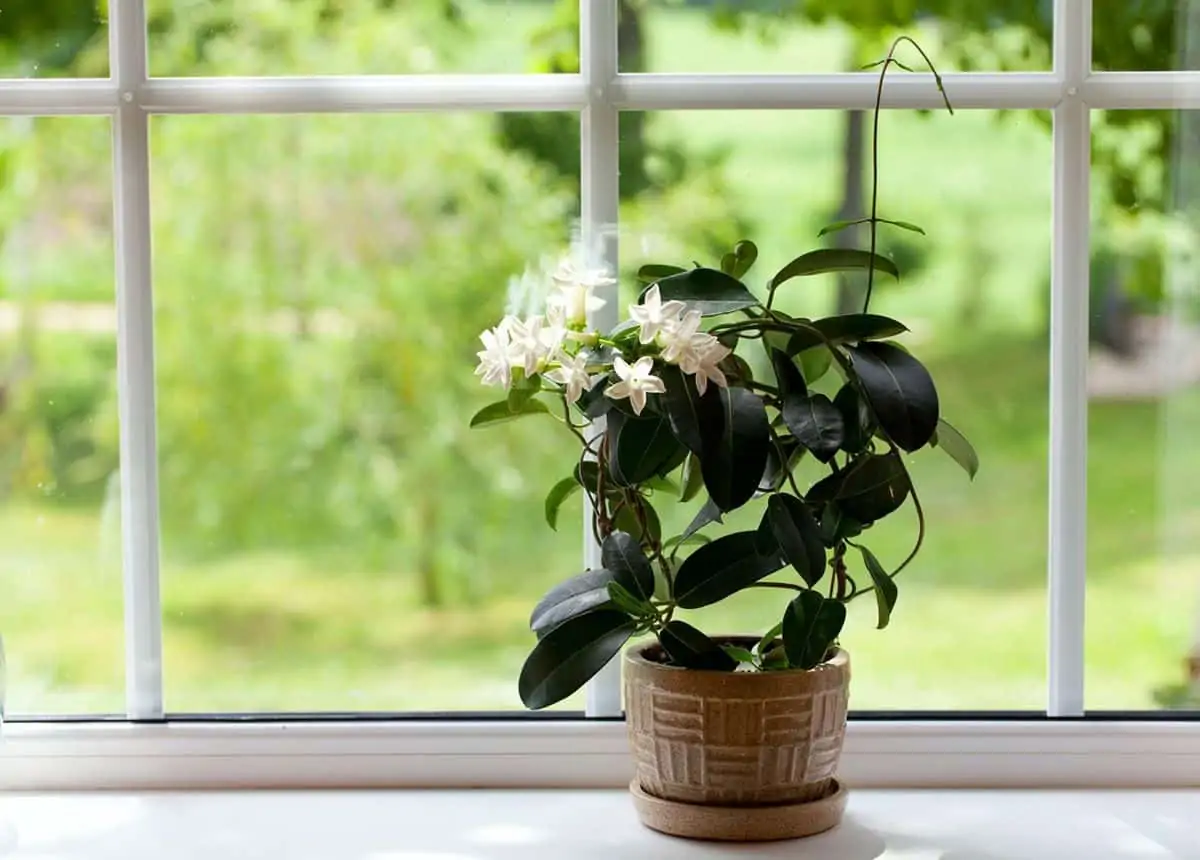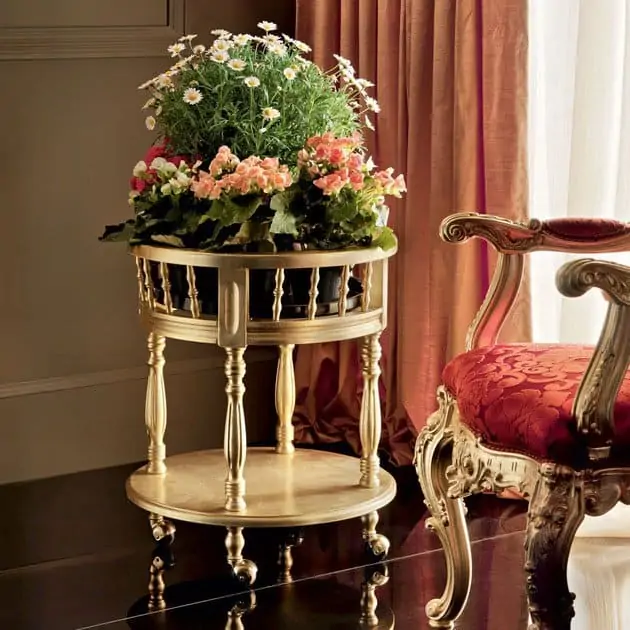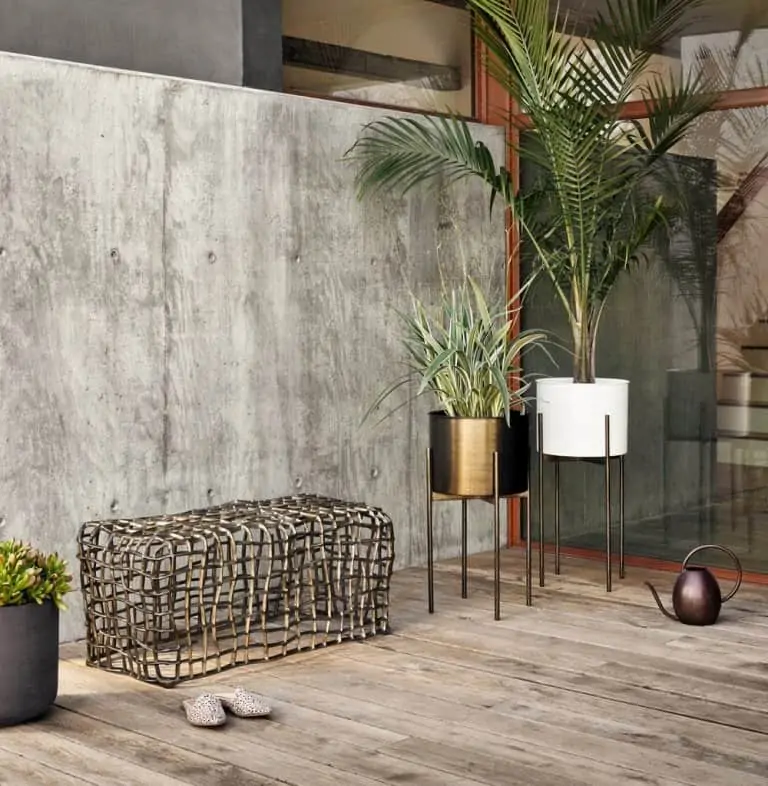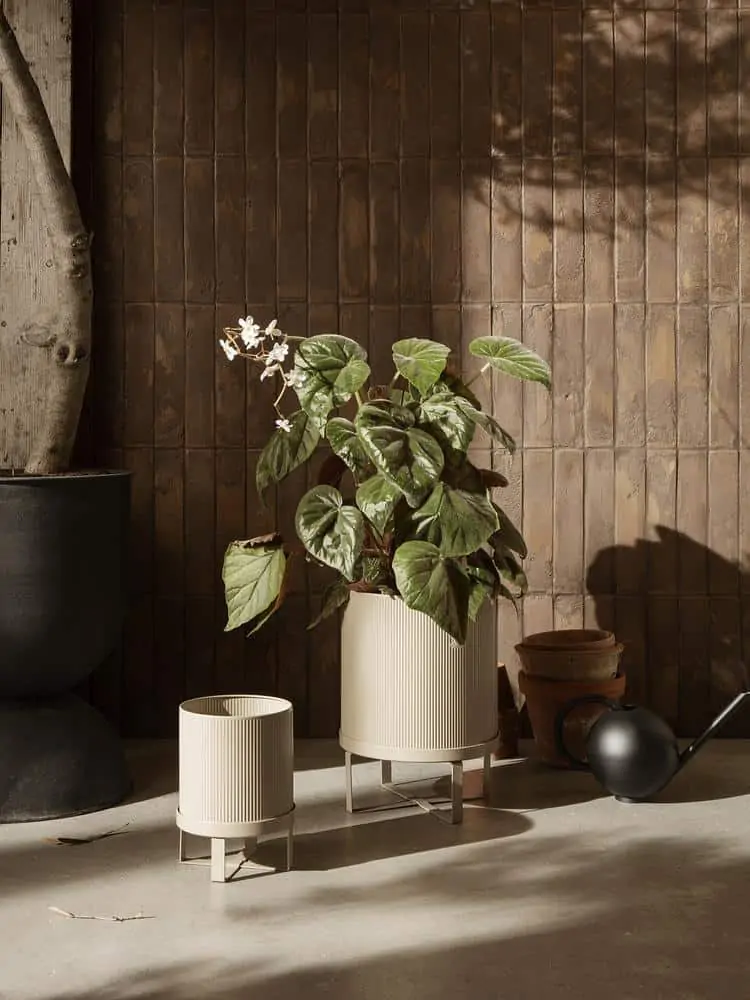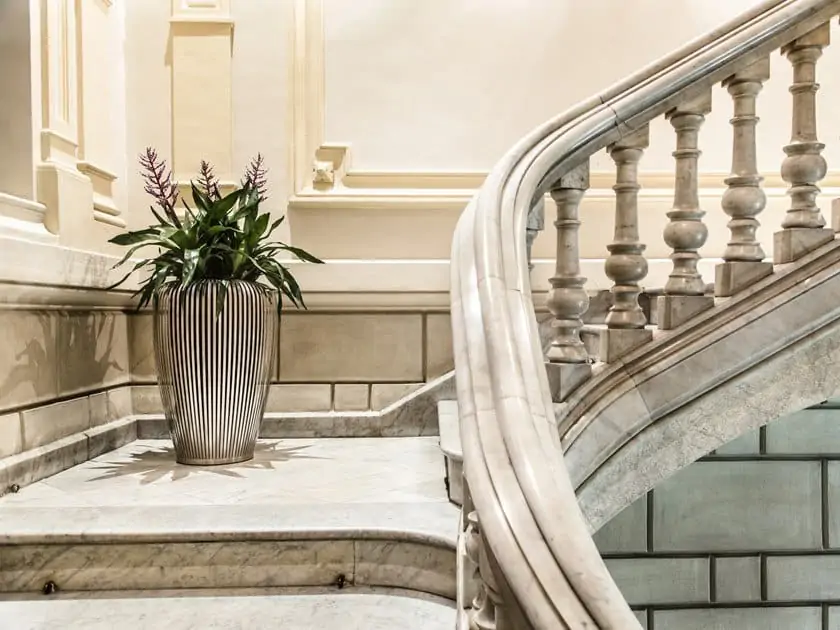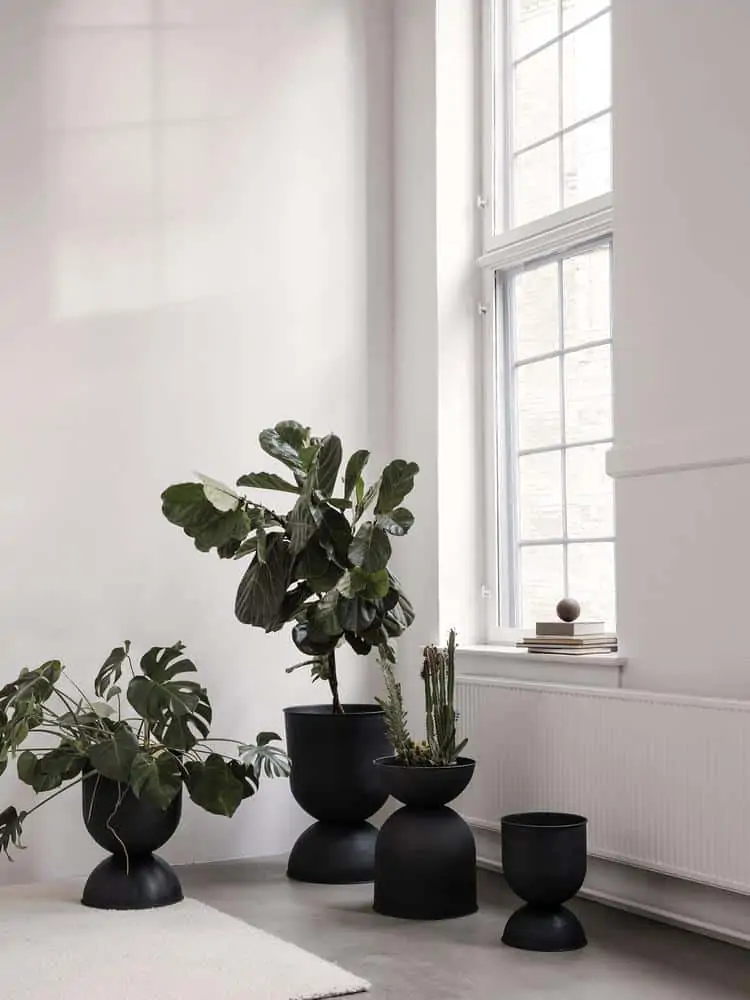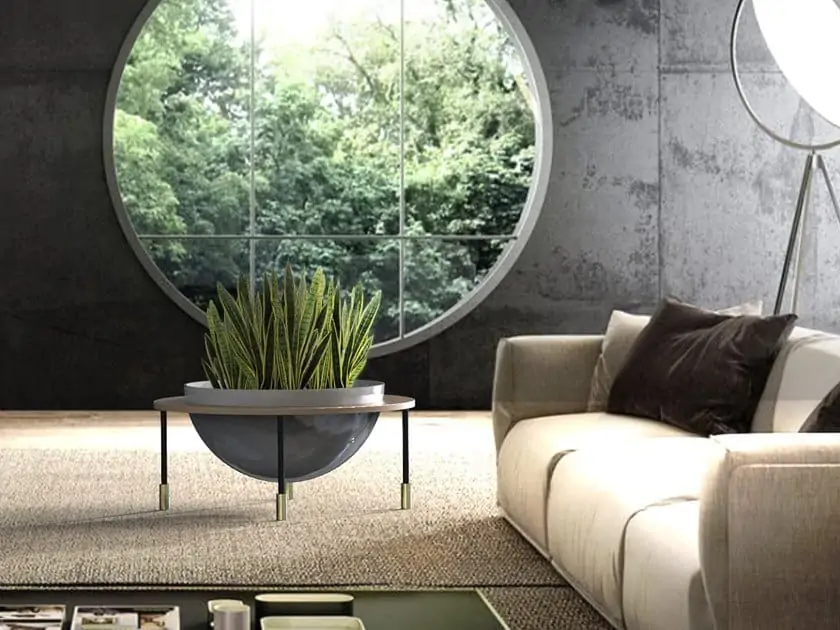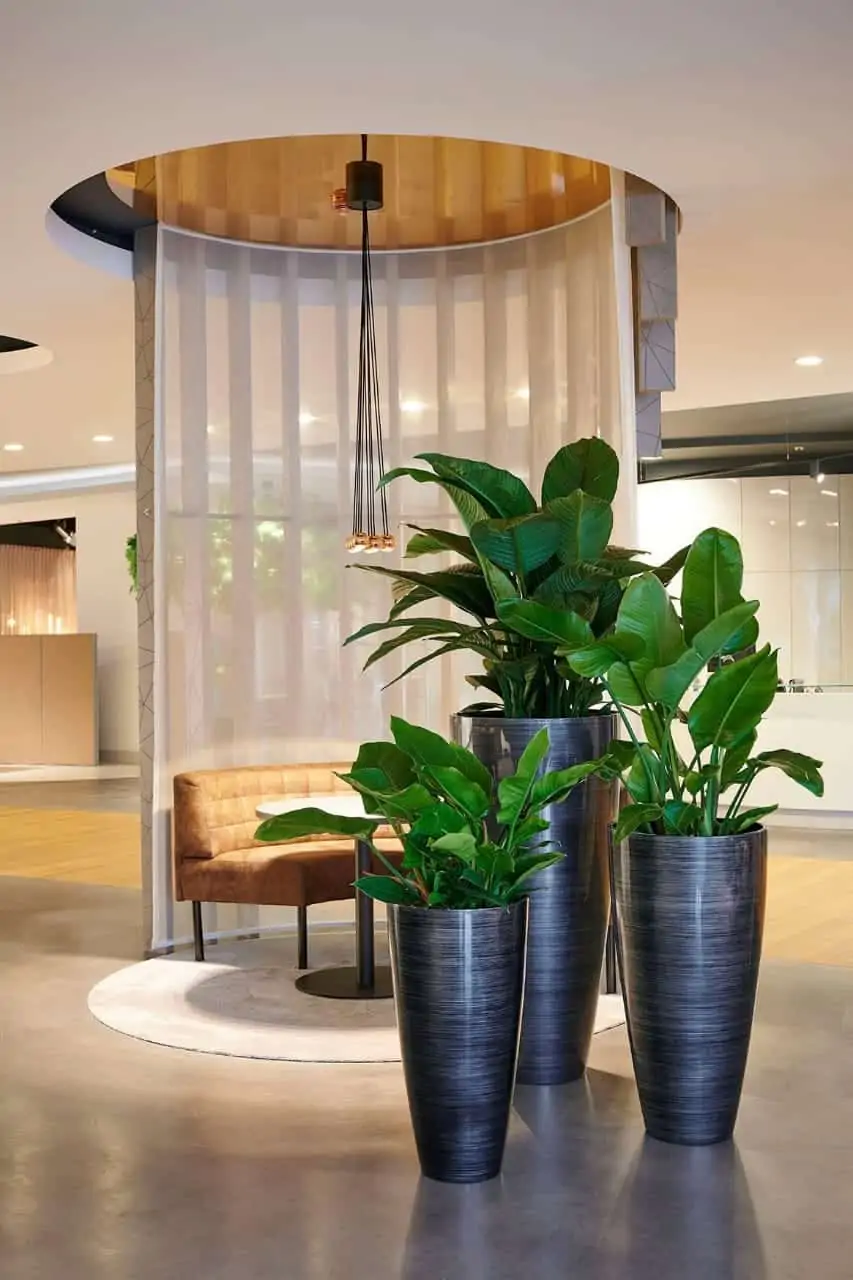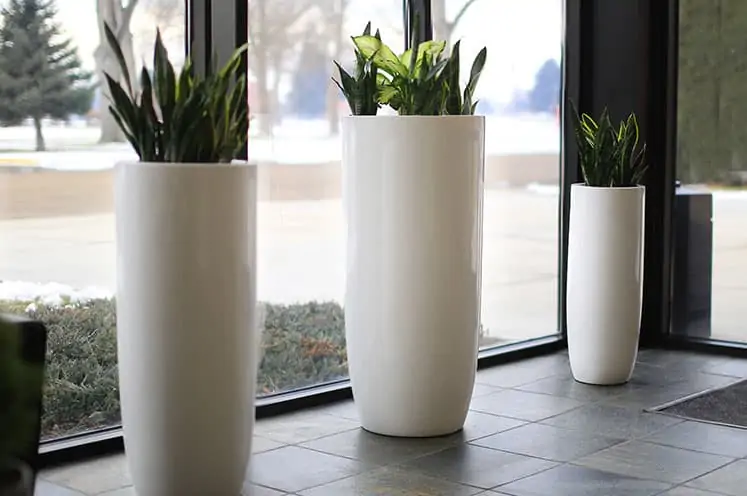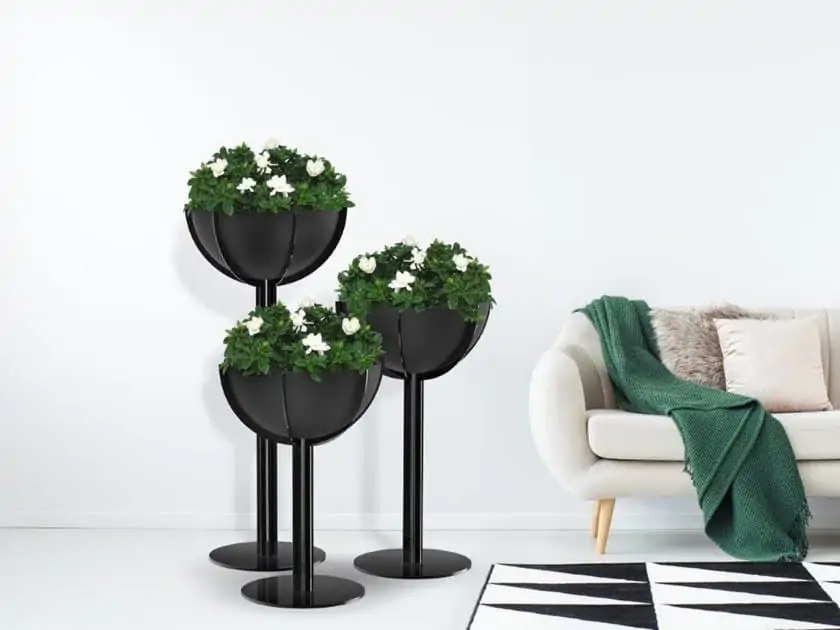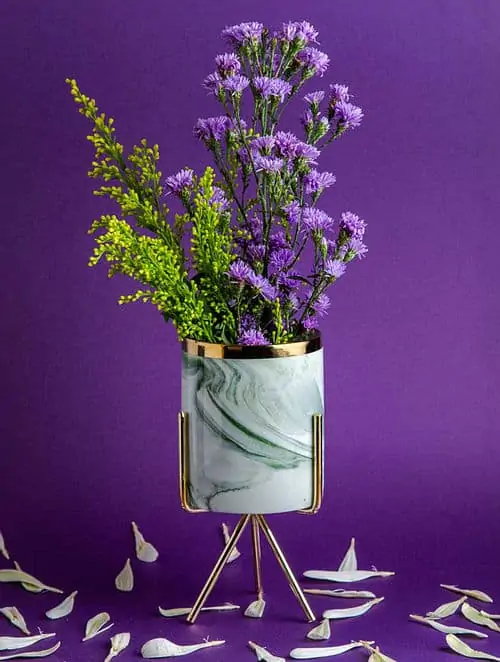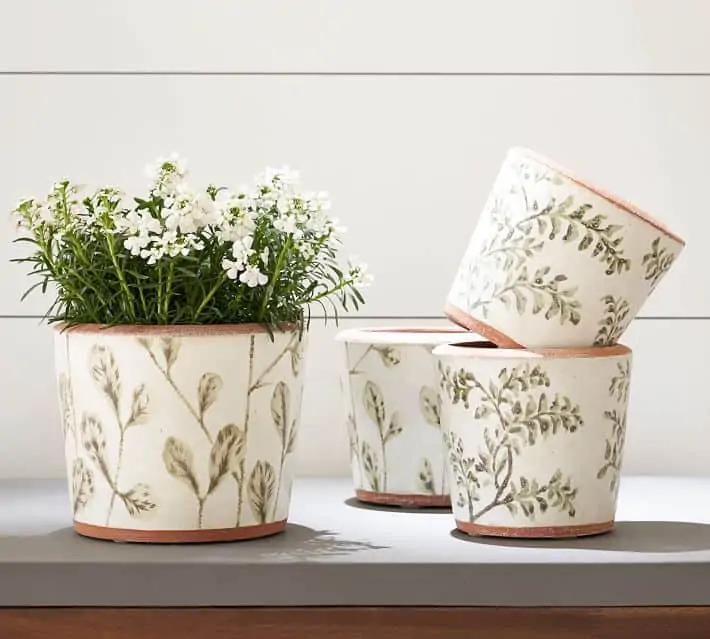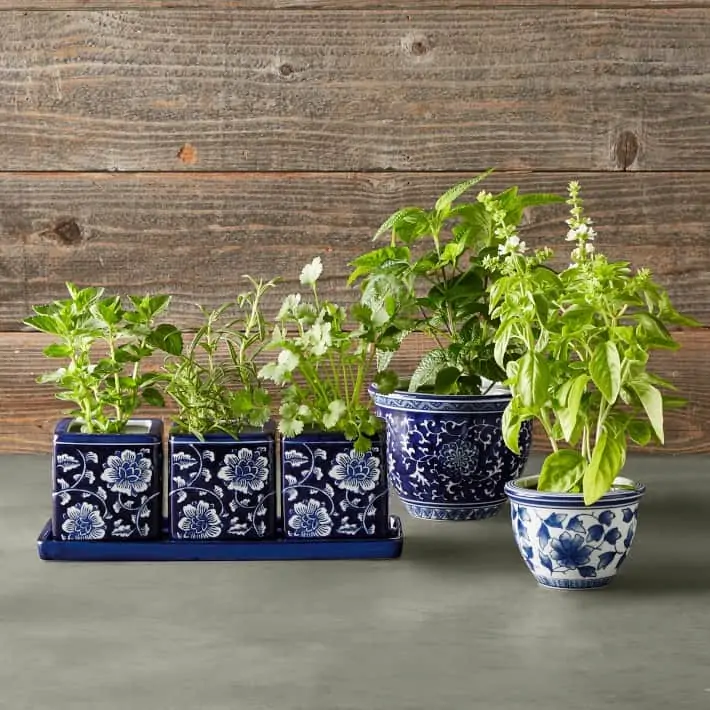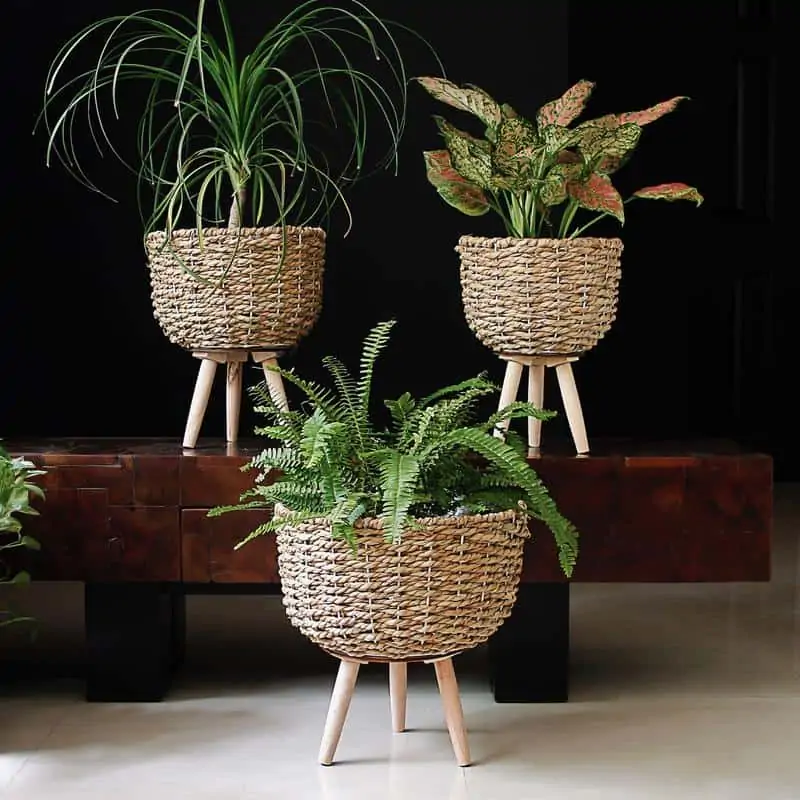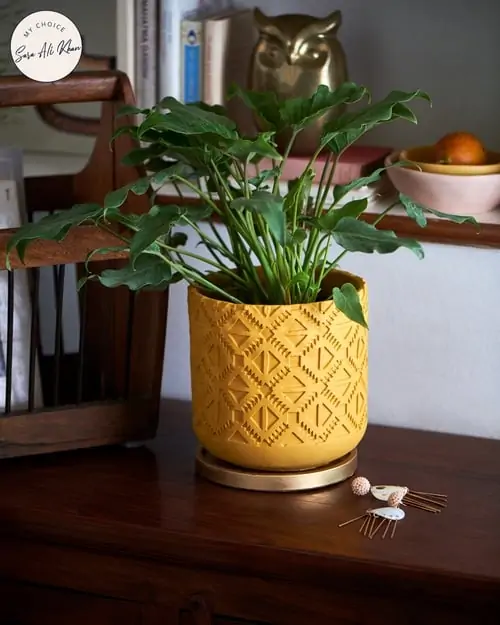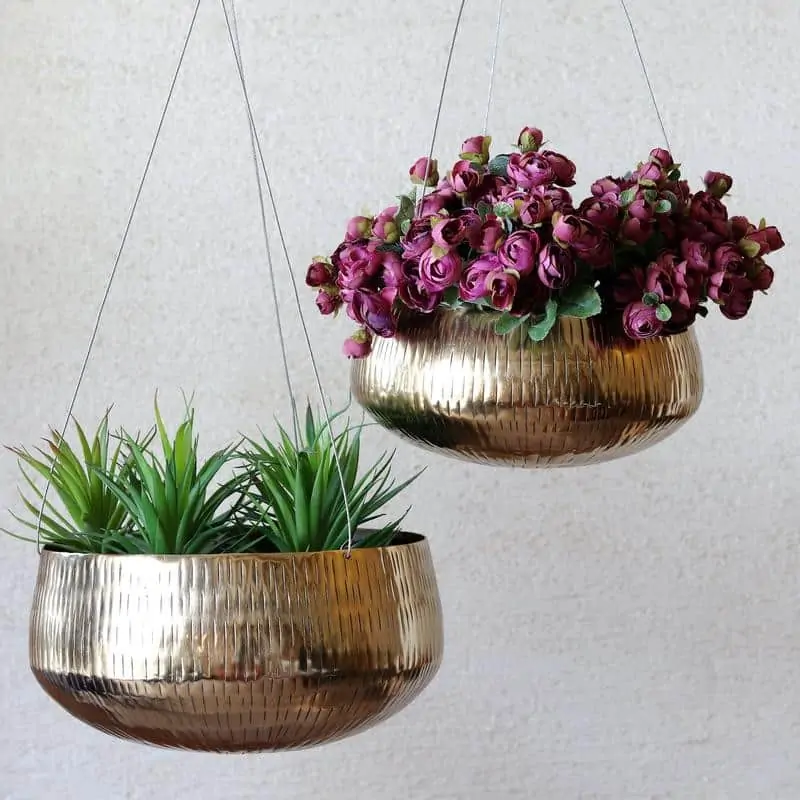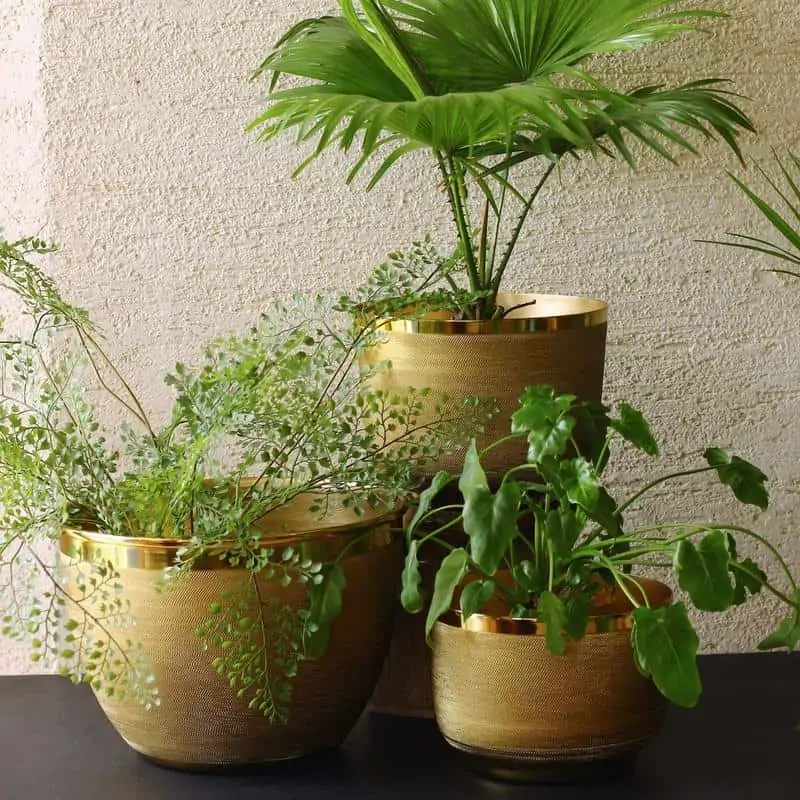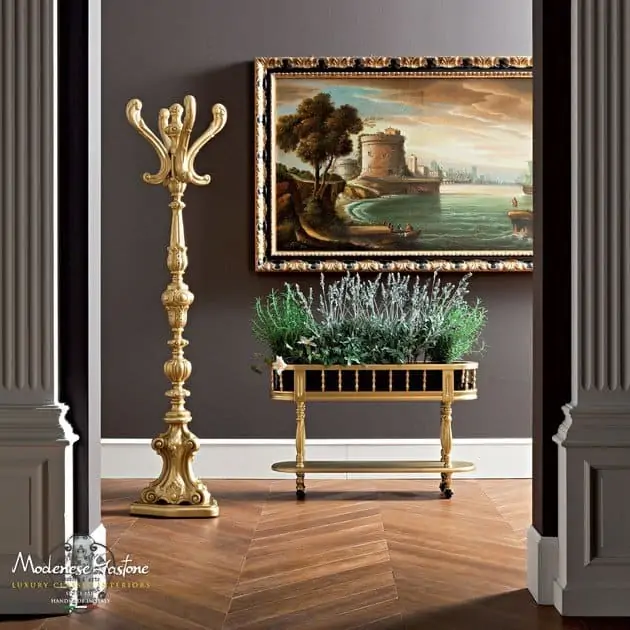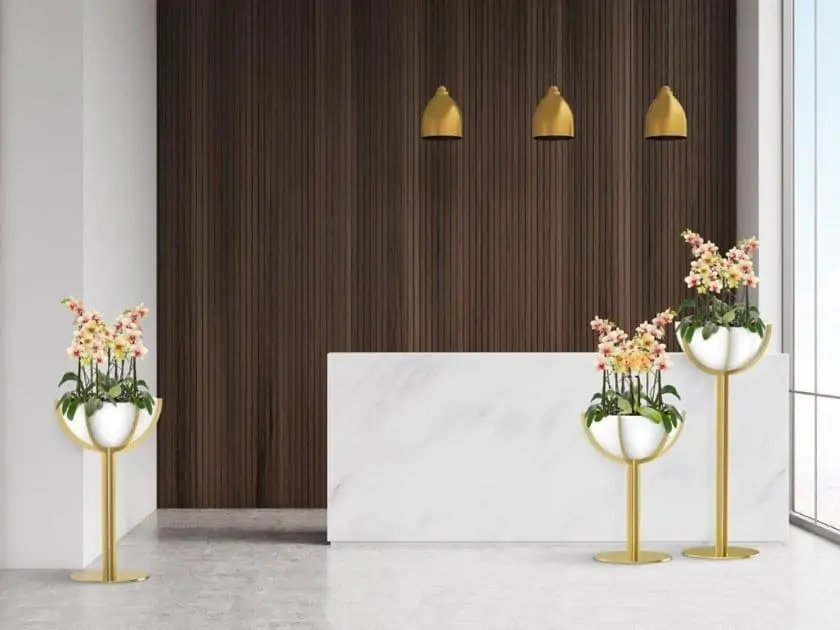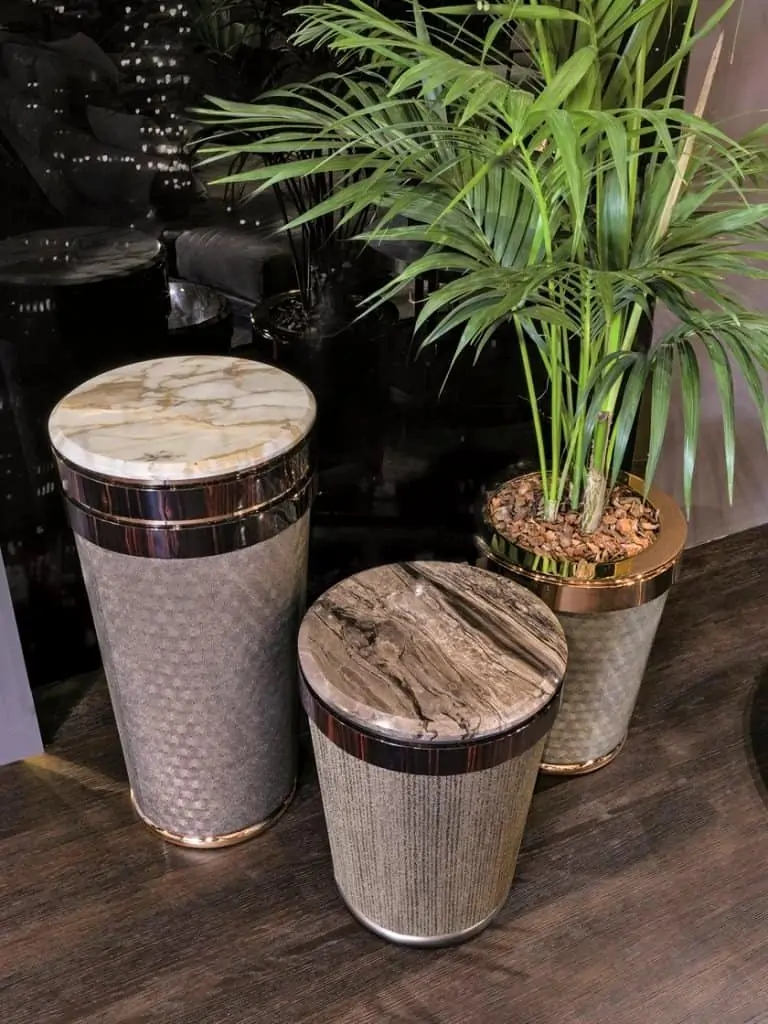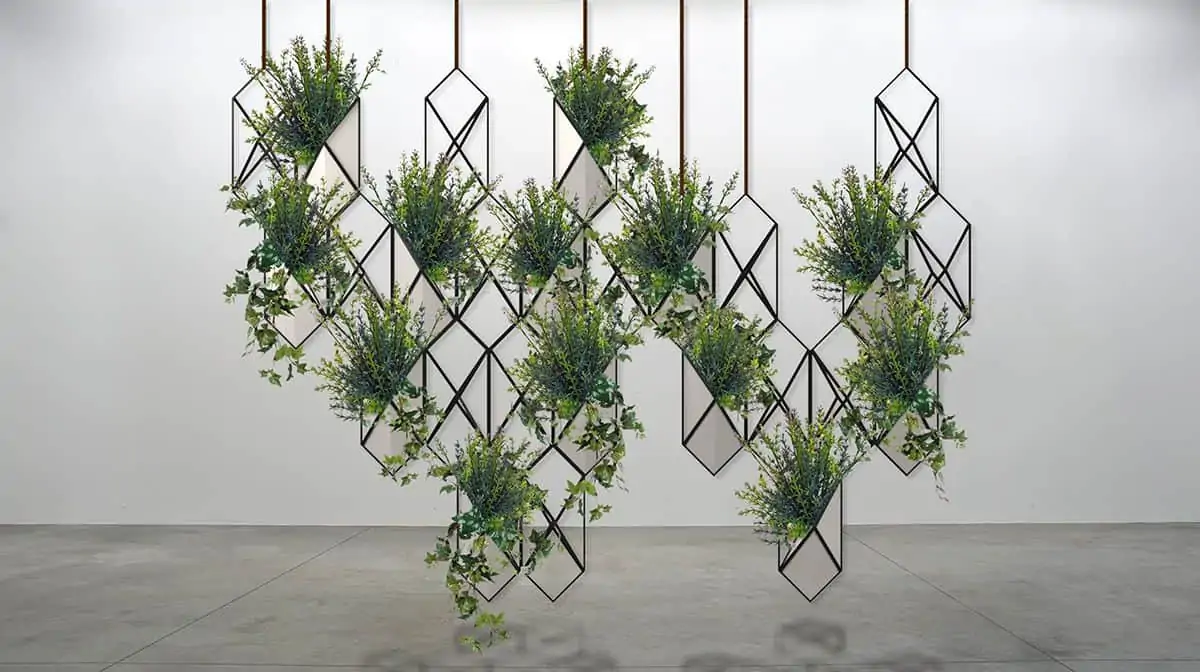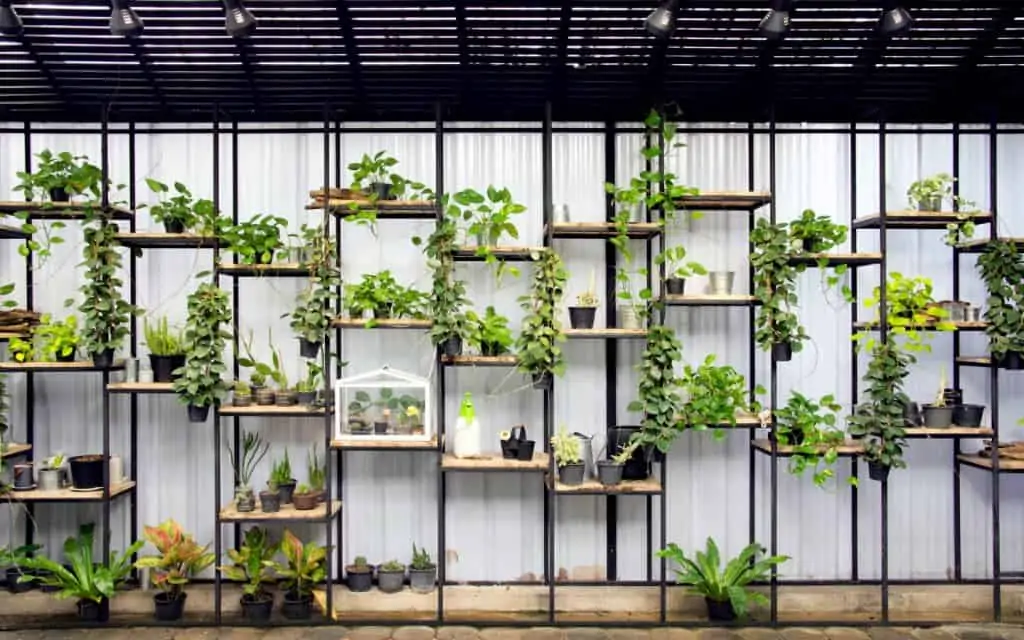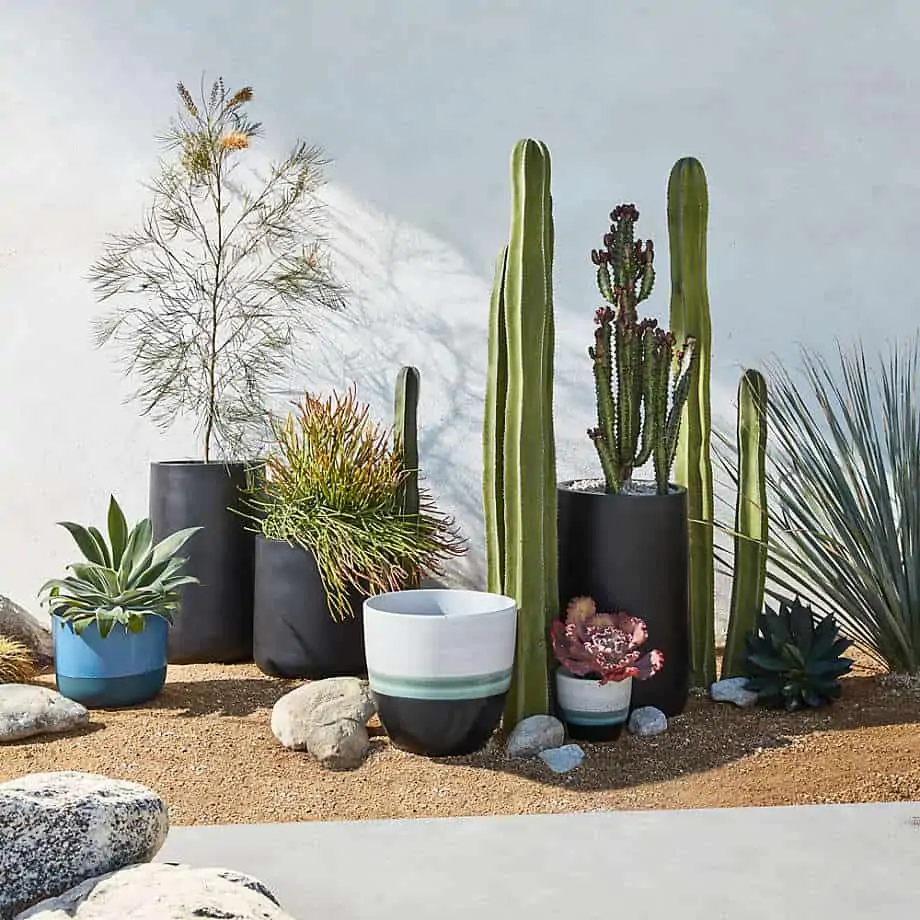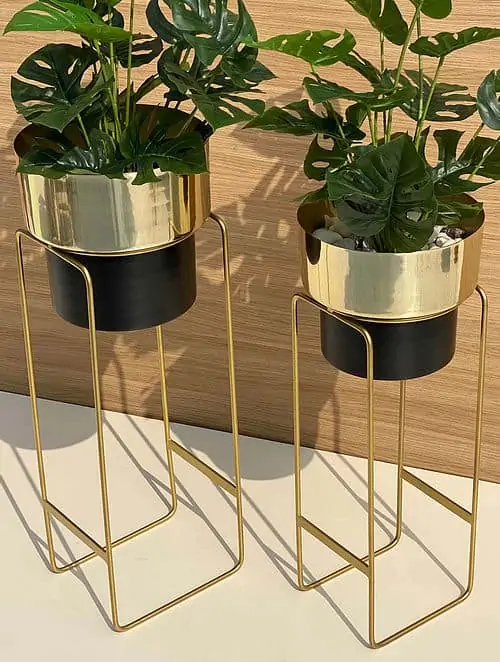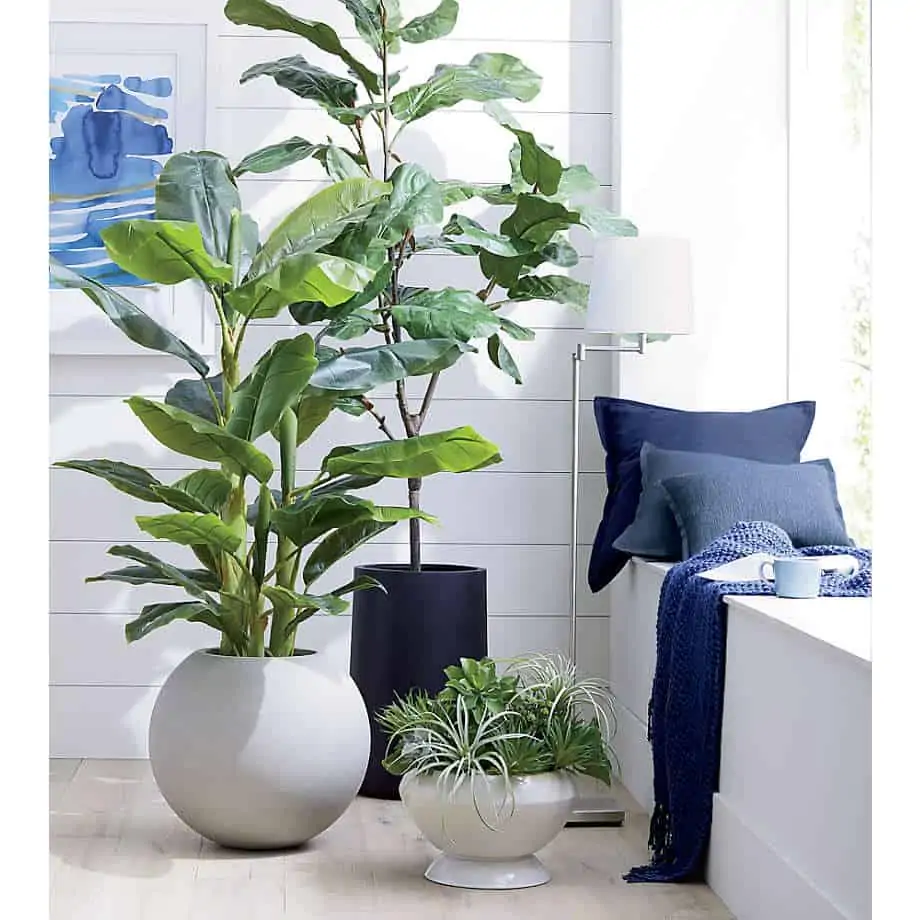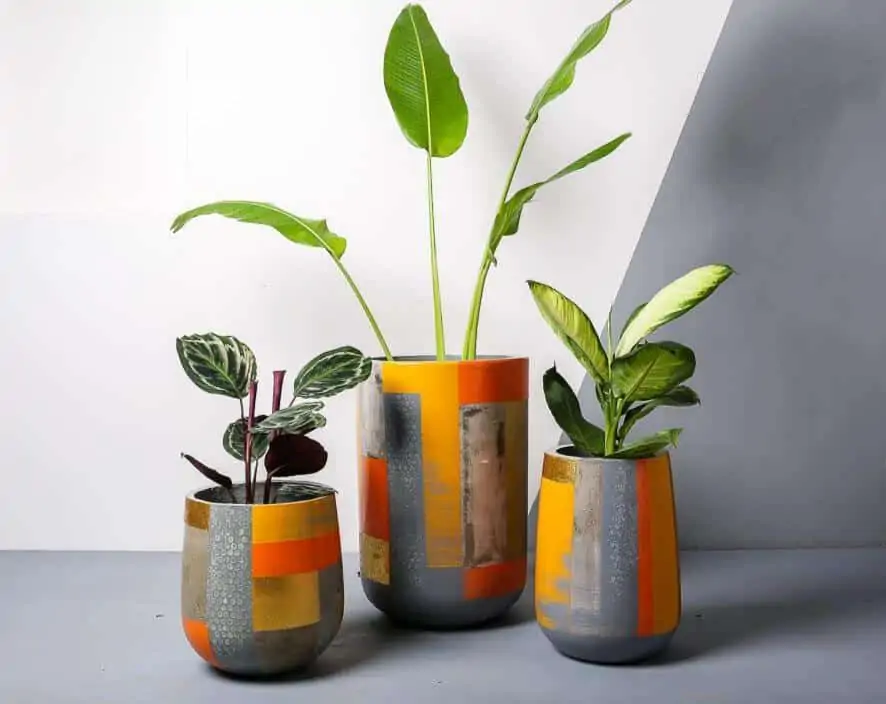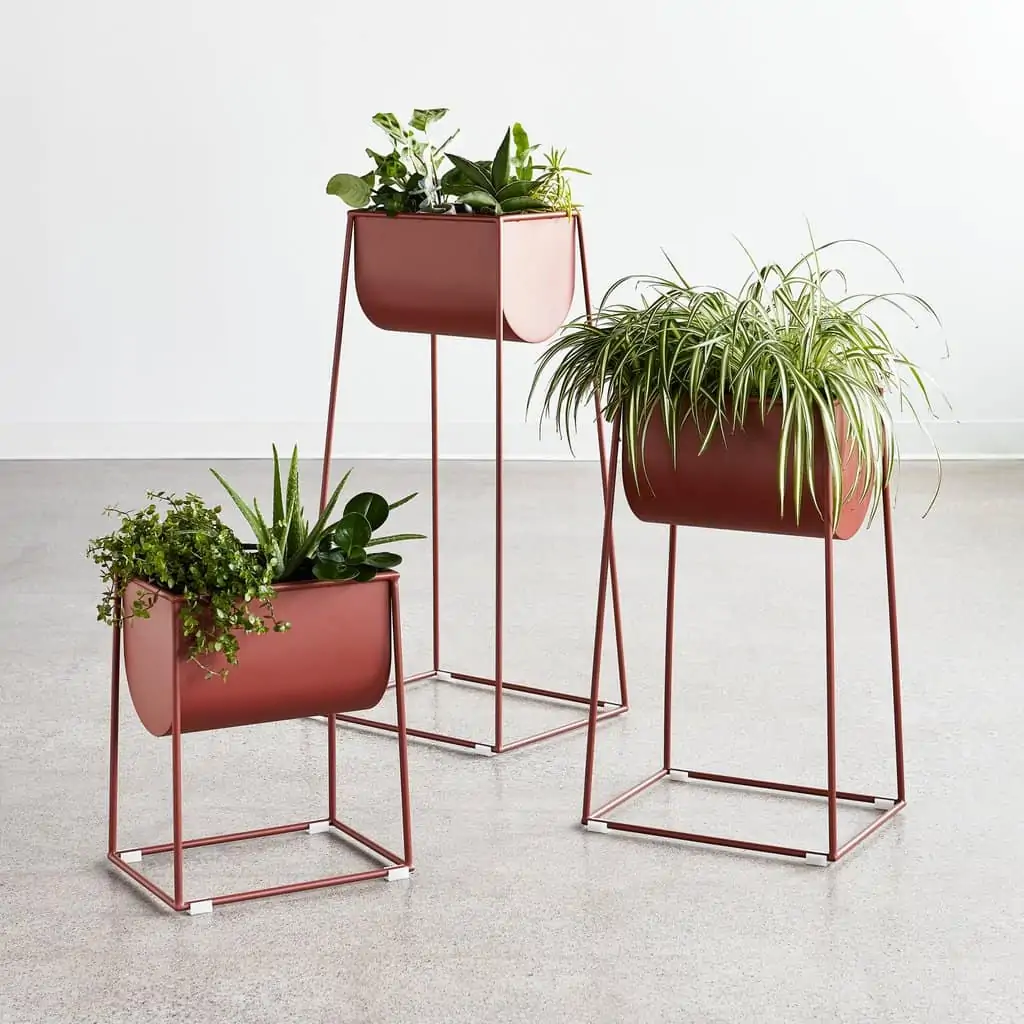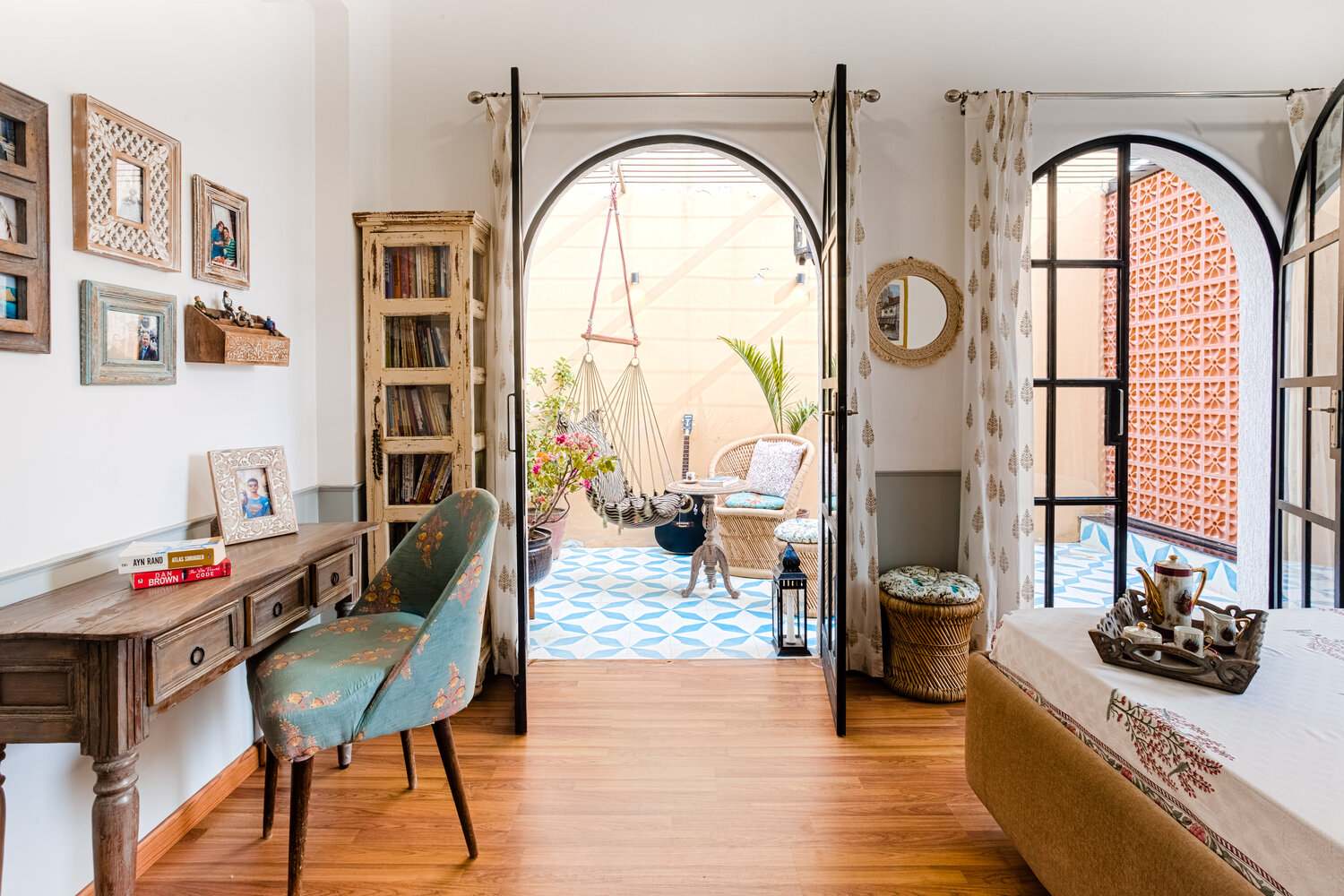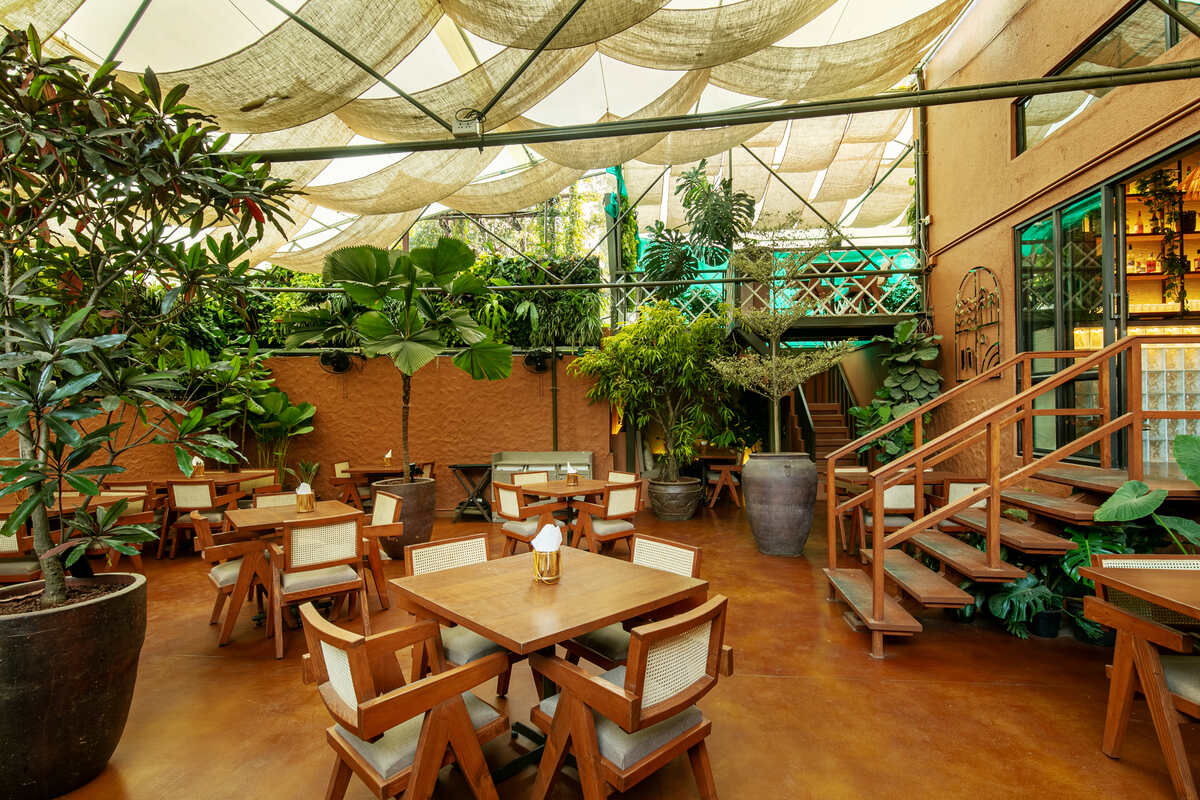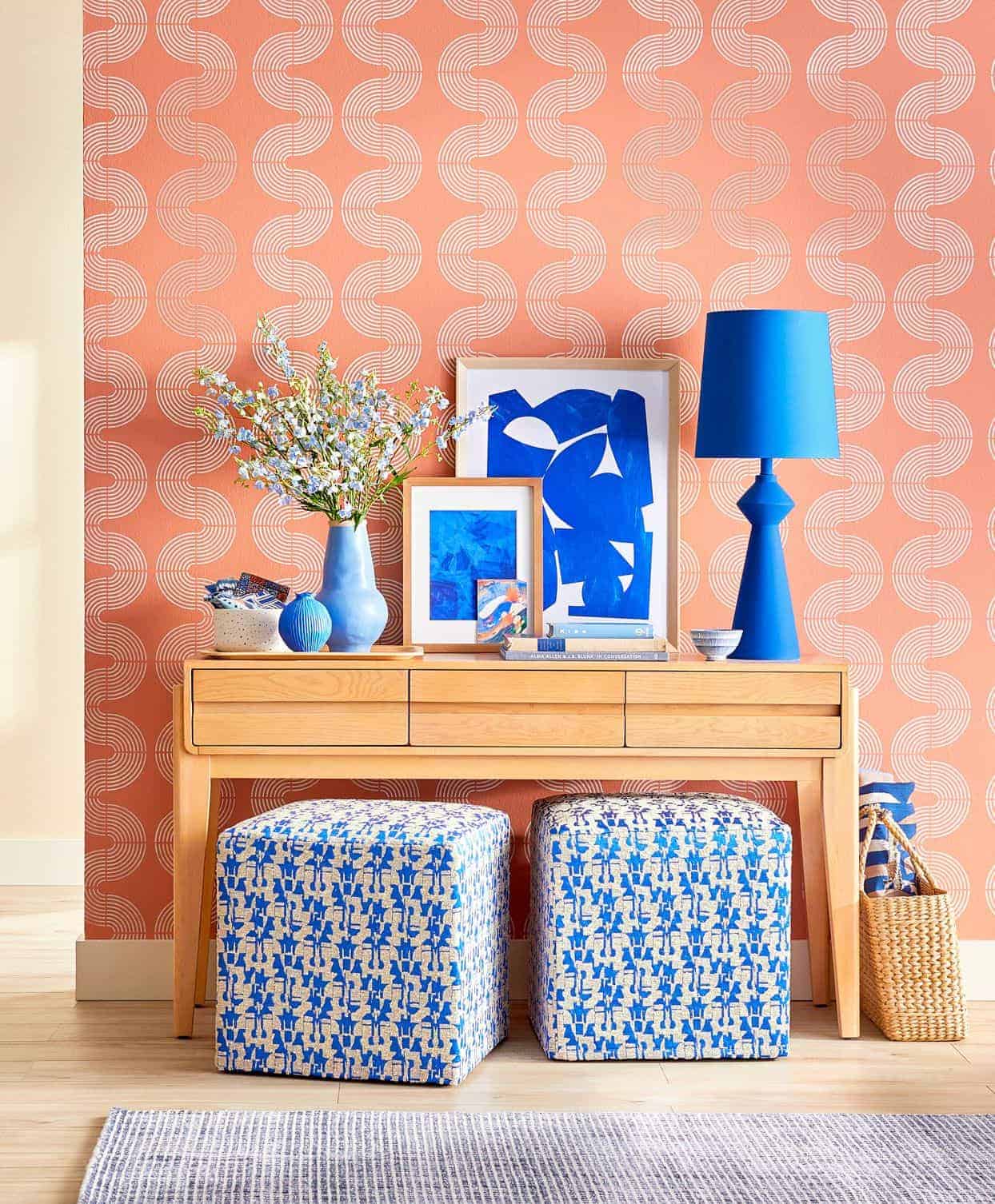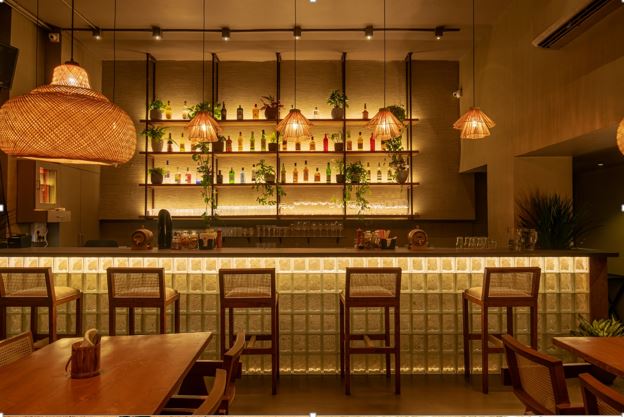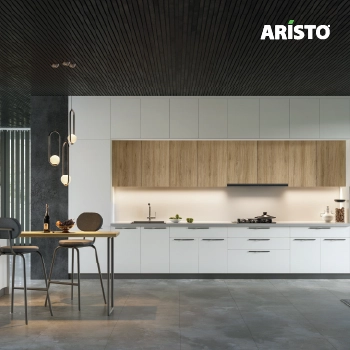Indoor plants, also referred to as houseplants, have become an integral element of every house these days. These largely contribute to the home interior design. Additionally, among the other few things required to take your home decor a notch higher are the right pots like ceramic pots or terracotta pots for indoor plants. In a similar manner, the needs and favorable environment for a bonsai can differ from that of a money plant.
Since greenery brightens up the space, it becomes a major mood booster in the decor. Therefore, plants are a marvelous way to invigorate your surroundings and add some glorious freshness to your space.
Besides amplifying the aesthetic appeal of your home, plants act as an air purifier as well. Moreover, houseplants are relatively easy to maintain and make a blissful addition to an urban home.
Are you looking for ideas to change the setting and landscape in your next project? Being an interior designer, it is important for you to be a plant expert as well.
Decorating with houseplants benefits the homeowners in several ways. They produce additional oxygen through photosynthesis, help reduce stress, and increase productivity. However, it’s pivotal to remember that they need organic elements and a fair bit of care to thrive well indoors.
Regardless of how you decide to do it, decorating with indoor plants helps infuse a refreshing decor element without investing too much time, effort, or money. In addition, they bring the freshness of the outdoors inside the home.
In addition, Vastu Shastra advises the inclusion of various kinds of plants in your home to ensure peace, prosperity, good health, and happiness.
Contents
- 1 Types of indoor plants
- 2 Pots for indoor plants
- 3 Maintenance tips for houseplants
- 4 Interior decoration with houseplants
- 5 Best Vastu plants
- 6 Best pots for indoor plants (Click on the link below to buy)
- 6.1 Indoor plant Pot by Modenese Gastone
- 6.2 Jed Tall Planter in White High Gloss by Burke Decor
- 6.3 Bau Indoor Pot by Ferm Living
- 6.4 High indoor plant pot By Hobby Flower
- 6.5 Hourglass Indoor Plant Pot by Burke Decor
- 6.6 ANDROMEDA Round Pot by BLOSS
- 6.7 SavvyCube by Saviesa
- 6.8 DRY Metal pots by BLOSS
- 6.9 Indoor Planters by Koberg
- 6.10 Peypin Tall Round Indoor Planter by Jay Scotts
- 7 Pots for indoor plants: Decor inspiration and ideas
- 8 Conclusion
Types of indoor plants
Find below a list of the best, easy to maintain, and beautiful indoor plants in India, to help you pick out the right one.
Tropical and sub-tropical indoor plants
The term tropical plant refers to any type of plant that naturally flourishes in a typically hot and humid climate. Moreover, they thrive in areas with temperatures constantly exceeding 18 degrees Celsius.
Tropical plants require consistently warmer temperatures and more humid environments than regular plants. In addition, they come blooming as well as foliage plants.
Some of them are as follows:-
| Also see: Spider Plant: Guide to style, care for & grow indoors (Buy online) |
Chinese evergreen
Image Source: The Green Mad House
| B U Y H E R E |
Aglaonema or Chinese evergreen is considered to be a luck-bringing ornamental plant. It is attractive, tolerates low light, and does not grow too quickly which makes it ideal for indoors. The varieties of this slow-growing plant include plain green, speckled, blotched, and variegated types.
Temperatures from 18 to 27 degrees Celsius remain ideal for this plant. However, temperature below 15 degrees Celsius is not healthy and causes dark patches on the leaves. Make sure to use a pot with drainage holes, preferably a ceramic pot.
These plants have a maximum height of 3 feet and leaves that grow up to 30 cm in length and about 5 to 8 cm in width.
| Also see: Succulent plants: 10 Best types & tips to grow indoors (Buy online!) |
Prayer plant
Image Source: Miami Urban Jungle
| B U Y H E R E |
Maranta leuconeura or the prayer plant is one of the most distinguishable tropical plants due to its beautiful decorative leaves. Its most popular variety exhibits deep green, velvety leaves with yellow splotches down the midrib and arching red veins.
A slow-grower, the prayer plant can eventually reach up to 6 to 12 inches in height indoors. It is ideal to hang or set these up near a window where they will receive indirect sunlight.
Additionally, you must opt for a plastic pot for the prayer plant as terracotta encourages the soil to dry out too fast.
Areca palm
Image Source: Happy Houseplants
| B U Y H E R E |
Dypsis lutescens, also known as areca palm, golden cane palm, yellow palm, or butterfly palm, is a species of flowering plant.
Indoors areca palm grows about 42 inches in height and 36 inches in width. Moreover, it is grown as an ornamental plant in gardens in tropical and subtropical regions, and as a houseplant in other regions. Any type of pot with good drainage works well for it to thrive.
| Also see: Jade plant: Benefits, care, propagation & 26+ decor ideas |
Dracaena
Image Source: ECOVIBE
| B U Y H E R E |
This popular indoor plant exhibits distinguishable long green leaves. Dracaena requires a low amount of light and water to thrive. Therefore, if you are looking for an easy-going, low-maintenance plant, this may be your perfect choice.
| Also see: How to plant, grow & decorate using Jasmine flowers (Shop here!) |
Money plant
Image Source: iProperty
| B U Y H E R E |
Epipremnum aureum or money plant is popularly known by a multitude of names, such as golden pothos, Ceylon creeper, hunter’s robe, ivy arum, silver vine, Solomon Islands ivy, marble queen, taro vine, devil’s vine, and devil’s ivy.
The undemanding nature of the money plant is well-suited for an environment in which it might not receive constant care. Money plant, an air-purifying plant, makes a great addition to any home, thriving in low light or in bright, indirect light.
Money plants prefer temperatures from 15 to 26 degrees Celsius and can be grown in water or soil. While watering a money plant, make sure that the top two inches of soil have dried out. Additionally, overwatering a money plant can lead to root rot. On the other hand, dry roots will make the money plant more susceptible to pests and disease.
A tropical creeper, the money plant is characterized by its shiny heart-shaped leaves. In addition, it is popular for its ornamental appeal and numerous health benefits. Moreover, money plants possess the ability to filter the air, purify it, and activate positive energies all around.
A money plant not only adds to the aesthetics of the space but also attracts wealth and prosperity as per Vastu Shastra.
To grow a money plant in water, glass jars, bottles, glass pots, and plastic bottles are preferred. On the other hand, use plastic, clay, or ceramic pots with a saucer underneath for growing money plants in soil.
Rubber plant
Image Source: Bergamotte
| B U Y H E R E |
Ficus elastic or the rubber plant can also be referred to as the rubber fig, rubber bush, rubber tree, or Indian rubber bush, Indian rubber tree.
Similar to a money plant, the leaves of this plant are its distinguishable feature. It has broad shiny oval leaves and is grown around the world as an ornamental houseplant. Moreover, a rubber fig can range from a medium-sized house plant to a grown indoor tree.
It is a plant that can handle under-watering better than over-watering. In addition, it needs bright light and a good amount of space around for it to grow well.
Fiddle-leaf fig
Image Source: Wayfair
| B U Y H E R E |
Ficus lyrata or a fiddle-leaf fig is a tall upright tropical plant with large violin-shaped leaves. Moreover, the leaves are variable in shape, but often with a broad apex and narrow middle, resembling a lyre or fiddle. It possesses a leathery texture, prominent veins, and a wavy margin.
Fiddle-leaf figs grow up to 40-50 feet outdoors, but commonly have heights between 3-5 feet when maintained as houseplants.
Often grown indoors as houseplants, fiddle-leaf figs should be potted in containers and repotted yearly as their roots grow. Since drainage is vital to a fiddle leaf, terracotta or other clay-based pots are ideal for this plant.
Boston fern
Image Source: Gardening Know How
| B U Y H E R E |
Nephrolepis exaltata or Boston fern is an evergreen non-flowering plant that requires consistently moist soil conditions. It can reach as high as 16 to 35 inches. Additionally, it is also referred to as the Boston sword fern, wild Boston fern, Boston bluebell fern, tuber ladder fern, or fishbone fern.
A Boston requires minimal sunlight and is a slow grower, making it suitable for indoors. It looks the most beautiful in hanging planters made out of plastic or glazed terracotta.
Swiss cheese plant
Image Source: That Planty Life
| B U Y H E R E |
Monstera deliciosa or the ‘Swiss cheese’ plant is a popular tropical plant known for its large heart-shaped leaves. Due to rapid widespread growth, its leaves spread out with age to a width that may double the height.
This plant needs to be watered every one to two weeks, letting the soil dry out between each watering session. In addition, it is perfect for spots that do not receive direct sunlight. It can thrive in any spot that receives bright to medium indirect light.
It commonly grows 3 to 4 feet tall indoors and up to 30 feet tall in the wild. Choose a fairly deep pot, preferably terracotta or ceramic pot, that is few inches wider than the root of the plant.
Snake plant
Image Source: Succulent City
| B U Y H E R E |
Dracaena trifasciata or snake Plants is also known as mother-in-law’s tongue. It is a densely packed evergreen plant with stiff upright leaves with irregular green banding.
Designer in shape, snake plants have gained popularity due to their low maintenance, pronounced dimension, and air purifying properties.
Indoor snake plants typically grow to heights between 2 to 4 inches. Its leaves vary between species, but usually are dark green in colour and widths of 2-2.5 inches.
For a snake plant, choose a pot with a drainage hole. Terracotta pots work well for this purpose and the second-best option is plastic pots.
ZZ plant
Image Source: ECOVIBE
| B U Y H E R E |
Zamioculcas zamiifolia, Zanzibar Gem, or ZZ plants are known as flowering plants, but they very rarely produce flowers. However, it features wide, dark green leaves.
It is also known as the Zuzu plant, aroid palm, eternity plant, and emerald palm. It is grown as an ornamental plant, mainly for its attractive glossy foliage. Moreover, it is easy to take care of and has air purifying properties.
ZZ plants best grow in temperatures ranging from 18 to 26 degrees Celsius. The most ideal pot for this plant is a plastic pot but terracotta pots or ceramic pots are fairly good too.
Philodendron
Image Source: Soon Afternoon
| B U Y H E R E |
It is a very common indoor plant that rarely attracts pests and is adaptable to various environments. It is best to set the plant in a location with bright, indirect sunlight.
Similar to a money plant, a philodendron’s heart-shaped leaves and trailing vines can grow up to 10 feet in length in the right conditions.
For a philodendron, choose a glazed ceramic pot, plastic pot, or a hanging planter that is 1-2 inches larger in diameter.
Peace lily
Image Source: My Domaine
| B U Y H E R E |
Spathiphyllum or peace lily is also referred to as spath commonly. Cultivated to grow and thrive indoors, peace lilies suit the bonsai aesthetics shaped like a traditional outdoor bonsai.
This plant thrives best when the soil is moist, but not overwatered. If looking for flowers, move the plant to a darker room. Moreover, peace lilies handle low light very well. Therefore, a north-facing window is a nice location for this plant.
These are tropical evergreen perennials with white blooms and lance-shaped glossy green leaves. Peace lilies typically grow to a height of 24 to 40 inches with larger variants growing up to 32 to 50 inches.
Almost any pot material works well for a peace lily, such as ceramic, plastic, and terracotta.
Madagascar jasmine
Image Source: Gardening Know How
| B U Y H E R E |
Stephanotis floribunda or the Madagascar jasmine is a flowering plant native to Madagascar. It is a climber suitable for a warm room or a pot near a sunny window.
Its white, waxy blooms give off a rich aroma that will spread throughout the house. Therefore, it is grown outdoors and indoors for clusters of scented blooms and shiny oval-shaped leaves.
A Madagascar jasmine blooms best in a plastic pot.
Succulents for indoor plants
Succulents are a family of plants drought-resistant in nature. They are known to have adapted well to dry, arid environments. They store water in their leaves, stems, or roots. As a result, those areas on the plant appear to be fleshier, swollen, or more pronounced.
Such significantly thick areas look peculiar, making them an interesting visual accent. Although succulents can potentially grow exceptionally large, at home they tend to be smaller in size.
Some of the most popularly seen succulents are as follows:-
Aloe vera
Image Source: Camden
| B U Y H E R E |
Aloe vera is a short-stemmed plant that typically grows from 30-61 cm tall but can grow up to 91 cm in the right conditions.
Its leaves are thick and fleshy with a green to grey-green colour. Some of its varieties show white flecks on their upper and lower stem surfaces with a serrated leaf margin.
Set this plant up in a location that offers bright, indirect sunlight. Like most other houseplants, aloe does best in temperatures between 13 and 27 degrees Celsius.
To keep the plant thriving, it is best to plant aloe in a terracotta pot with proper drainage.
Cactus
Image Source: Styled Snapshots
| B U Y H E R E |
Similar to most succulents, cacti have thickened, fleshy parts adapted to store water. However, the stem is the only part of most cacti where this vital process takes place.
Indoor potted cacti grow in a myriad of strange, unique, and wonderful shapes and sizes. It adds a low-maintenance personality to any space. Easy to grow indoors, the only attention that a cactus needs is the provision of bright light and fast-draining soil.
In addition, unglazed ceramic pots are porous in nature and most suitable for cactus.
Jade plant
Image Source: Indoor Garden Nook
| B U Y H E R E |
Crassula ovate or jade plant is a succulent with small pink or white blossoms. It has thick, tree-like stems and plump oval leaves. Moreover, this plant grows up to 3 feet indoors. The jade plant requires little water and can survive in most indoor conditions.
Although a slow grower, the jade plant becomes top-heavy after a while. Thus, a ceramic pot or a sturdy plastic pot with good drainage works best for a jade plant indoors.
String of pearls
Image Source: Orange Girl
| B U Y H E R E |
Curio rowleyanus or string of pearls is a flowering plant from the daisy family. It has specialized leaves which are the size and shape of small peas (about 1⁄4 inch diameter). Its trailing stems can grow from 2 to 3 feet.
Like any other succulent, the string of pearls also needs well-draining soil to thrive. Therefore, terracotta and unglazed ceramic are the two most popular choices.
Echeveria
Image Source: Brittany Goldwyn
| B U Y H E R E |
An echeveria features compact rosettes of succulent fleshy, often brightly coloured leaves. This plant doesn’t require moist soil conditions. Therefore, overwatering must be avoided.
The many varieties and colours of echeveria plants offer wonderful tones and textures for mixed beds and pots.
Terracotta and other types of clay pots are among the best ones for echeveria.
Air plants for indoors
Image Source: Modern Air Plants
| B U Y H E R E |
Air plants have become very popular over the last few years. They are versatile, don’t require soil, and are easy to care for.
Airplants need no soil medium to grow. Hence, they are used as living interior decor in a lot of homes.
Some of the most purchased air plants are xerographica, ionantha, stricta, brachycaulos, aeranthos, capitata, bulbosa, caput medusae, streptophylla hybrid, and tectorum ecuador.
Indoor bonsai
Image Source: About Bonsai
| B U Y H E R E |
The term ‘bonsai’ is used for all miniature trees in containers or pots.
Indoor bonsai are bonsai fostered for the indoor environment. Traditionally, bonsai is considered to be a tree for moderate climatic conditions grown outdoors. However, tropical and sub-tropical bonsai can be cultivated to grow and thrive indoors.
Indoor bonsai is the cultivation of an attractive, healthy-looking plant indoors. For this purpose, unlike traditional bonsai, an artificial environment is used for bonsai instead of an outdoor climate.
In comparison with other potted plants, bonsai are rooted in a much smaller amount of soil. Therefore, a bonsai requires more frequent watering and pruning, both of branches and roots.
Here is a list of the most popular bonsai:-
- Dracaena reflexa bonsai, commonly called song of India or song of Jamaica.
- Crassula ovate bonsai, commonly called jade plant.
- Ficus benjamina bonsai, commonly called weeping fig bonsai.
- Portulacaria afra bonsai, commonly called spekboom bonsai.
- Schefflera arboricola bonsai, commonly called dwarf umbrella tree.
- Schlumbergera bonsai, commonly called Christmas cactus.
- Tamarindus indica bonsai, commonly called tamarind bonsai.
- Hatiora salicornioides bonsai, commonly called bottle cactus bonsai or spice cactus bonsai.
How to bonsai a plant?
Artificial plants for indoors
Image Source: AMARA
| B U Y H E R E |
An artificial plant is a natural flowering plants’ imitation. Used for commercial or residential decoration, artificial plants are not highly distinguishable from the real ones.
Most artificial flowers in the market nowadays are made of polyester fabric. Apart from being visually aesthetic, artificial plants have several advantages. Some of them are:-
- Artificial plants are not affected by seasonal changes. Hence, their appearance remains the same throughout.
- They need not be fertilized or watered, making them the most low-maintenance option.
- The materials used in making non-natural plants are long-lasting and of advanced quality.
- Superior quality artificial plants look almost indistinguishable from real plants.
- Artificial plants are not restricted to one place. You can move them whenever you want and place them wherever you like.
- Synthetic plants don’t depend on water, air, and sunlight to survive.
Pots for indoor plants
Planters or pots for indoor plants provide endless planting possibilities and let you experiment with colour and texture. Colourful planters provide the much-needed pop of colour to any monochromatic space. On the other hand, pots in neutral and muted shades work well in a minimalistic interior.
The simplest approach to reinvent the space is by moving the pots around. Use them as a focal point in the living room, to grow herbs in a kitchen garden, or to. Moreover, they are useful for decorating small apartments, vertical indoor gardens, and for growing herbs in a kitchen garden.
Types of pots and planters
The right pots for indoor plants not only complement your decor but also save you a lot of hassle. They ensure a longer and healthier life for those ferns, succulents, and other plants.
Before finalizing anything, consider the material that best suits your plant’s needs. Usually, most plants thrive well in ceramic and terracotta pots due to their porous property. However, there always remain a few exceptions that require special types of pots.
To ensure the selection of the ideal pot, it is recommended to find out about the plant’s properties and preferred cultural conditions. This facilitates the process of choosing the best material, size, and style to ensure smooth and robust growth.
Terracotta pot
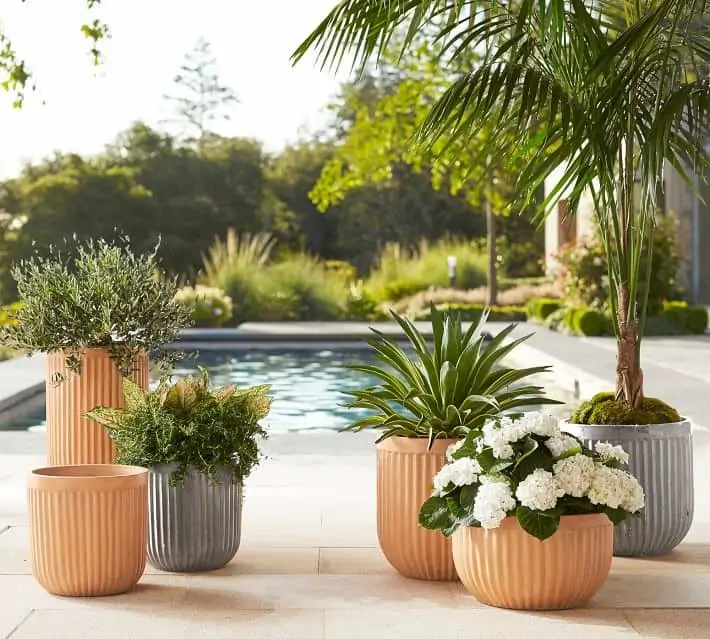
Image Source: Pottery Barn
| B U Y H E R E |
The Italian word terracotta translates to “baked earth”. It is an ancient clay-based material.
The body of the classic terracotta pots has a natural orange-brown hue and is porous. Therefore, the material is not watertight making the pot breathable. Most terracotta pots are in their natural state and unglazed. However, sometimes it is glazed to reduce the porosity.
In addition, terracotta pots are great for cacti, succulents, and other plants that prefer drier soil.
Advantages
- The warm reddish-brown colour of terracotta blends well with almost every plant.
- Available in a wide range of sizes to fit succulents, bonsai, as well as small trees. Therefore, ideal for indoor as well as outdoor gardening.
- Due to its porous nature, a terracotta pot prevents soil diseases and root rot.
- Heavier and more stable, making them less likely to tip over.
Disadvantages
- Using terracotta pots in cold weather can cause them to crack or break.
- Soil dries out faster in terracotta pots so plants need to be watered more often.
Plastic pot
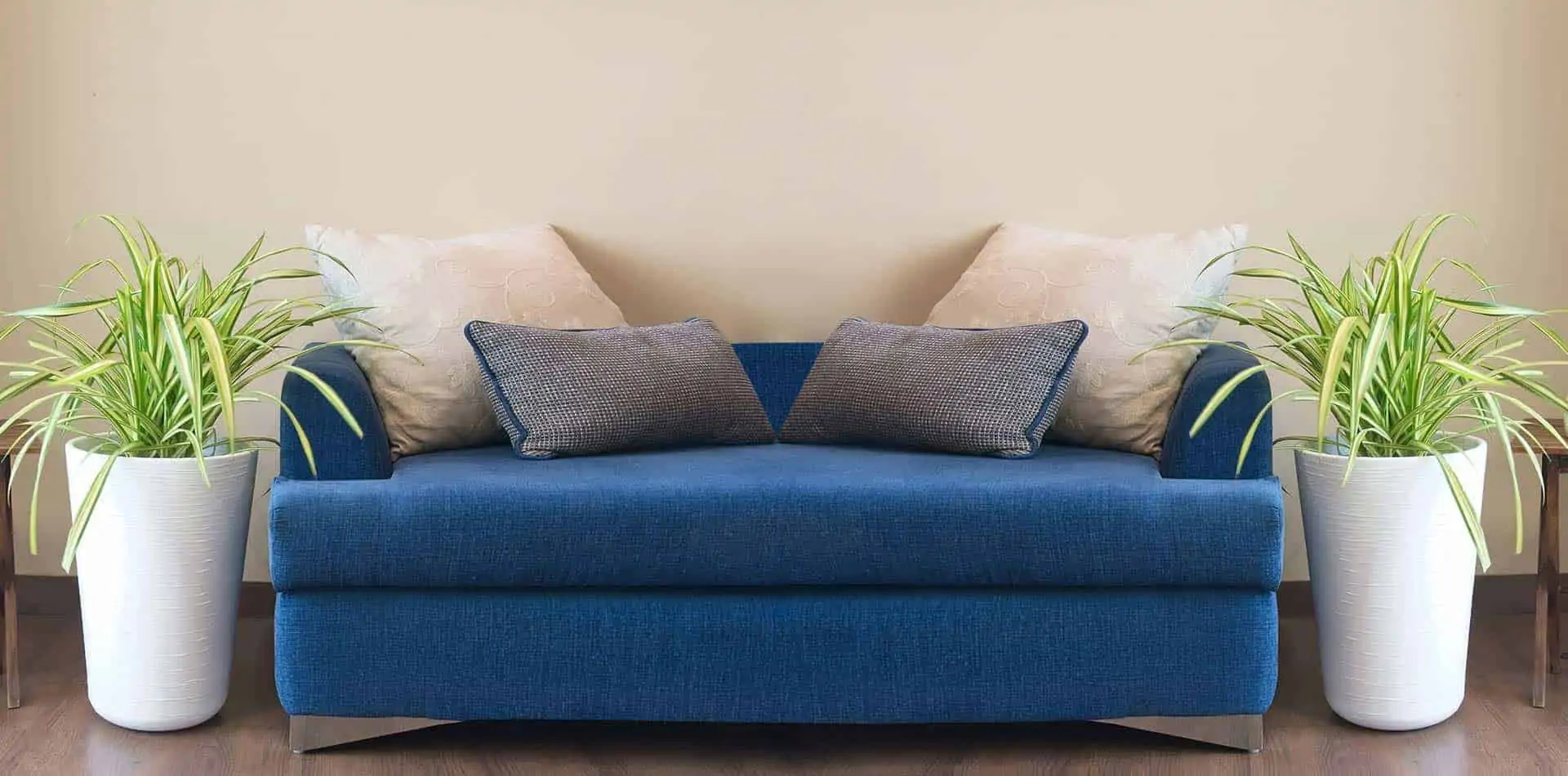
Image Source: Sereno
| B U Y H E R E |
Plastic pots offer an endless selection of styles, designs, and colours. Moreover, they can be an attractive addition to your interior décor highlighting the beauty of the houseplants.
Advantages
- Among all others, plastic is the least expensive material for pots.
- Come in a vast array of colours and sizes.
- Lightweight and suitable for plants that require moist soil conditions.
- They stand up to damage better and won’t break if dropped.
Disadvantages
- Cheap plastic pots tend to lose their vibrant colour, turn brittle, and break over time.
- Being non-porous in nature, plastic planters can create soil conditions that are too soggy and damage the plant.
Ceramic pot
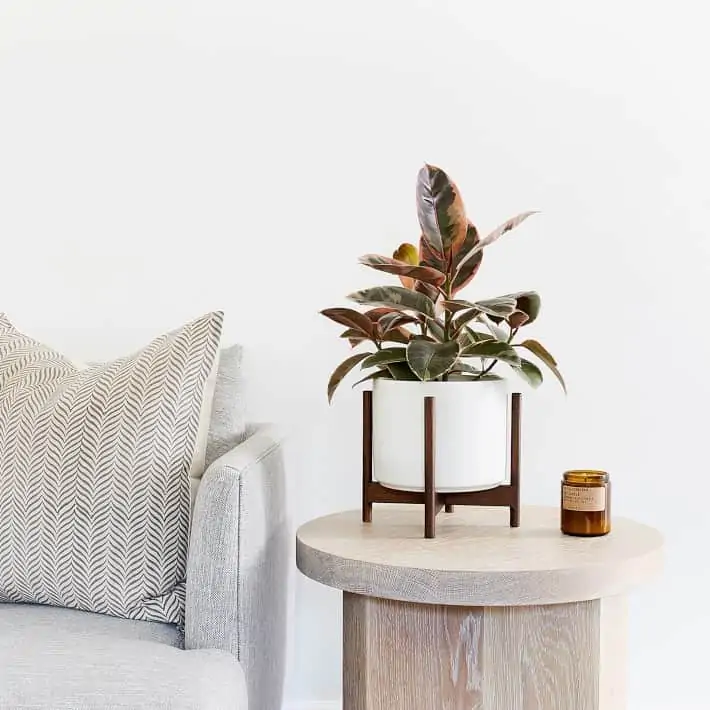
Image Source: Williams Sonoma
| B U Y H E R E |
Unlike terracotta pots, ceramic pots are made from less porous and denser earthen materials. In addition, ceramic pots are glazed on the outside as well as on the inside.
Advantages
- A wide range of sizes, colors, and some elaborately decorative styles of ceramic pots is available.
- Ceramic is highly durable and doesn’t break as easily.
- Suitable choice for plants that prefer consistently moist soil conditions.
- Ceramic pots are heavy and stable, and less likely to tip over.
Disadvantages
- Ceramic pots, especially large ones, are fairly expensive.
- Some of the ceramic pots do not possess bottom drain holes leading to soggy soil conditions and poor plant health.
Wooden planter
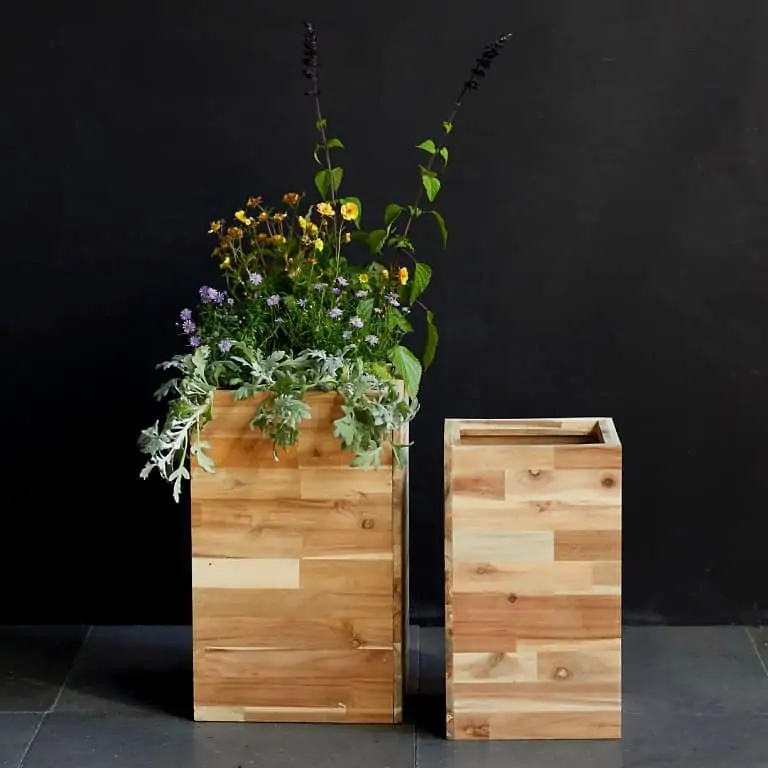
Image Source: Terrain
| B U Y H E R E |
One can never go wrong with wood. Opt for this material if you aim to achieve a more natural and expensive look.
Wooden pots serve a fairly long life when manufactured from woods like cedar or redwood in a proper manner. Although wooden pots are more commonly used for outdoor container gardening, indoor wooden planters look equally elegant.
Additionally, lining any type of wooden pot with plastic will extend the pot’s life, as it prevents extensive water damage. Moreover, these can be easily manufactured from engineered wood like plywood as well.
Advantages
- Easy to construct as per specific needs on size and style.
- Easy to stain or paint to fit your specific preference and taste.
- Wooden planters cost considerably less than ceramic or terracotta pots.
- Can be made out of recycled materials like wooden boxes, crates, baskets, or bark.
Disadvantages
- To prolong the life, the wooden pot requires periodic resealing.
- The wood can decay after a couple of years and are more likely to leak.
Metal planter
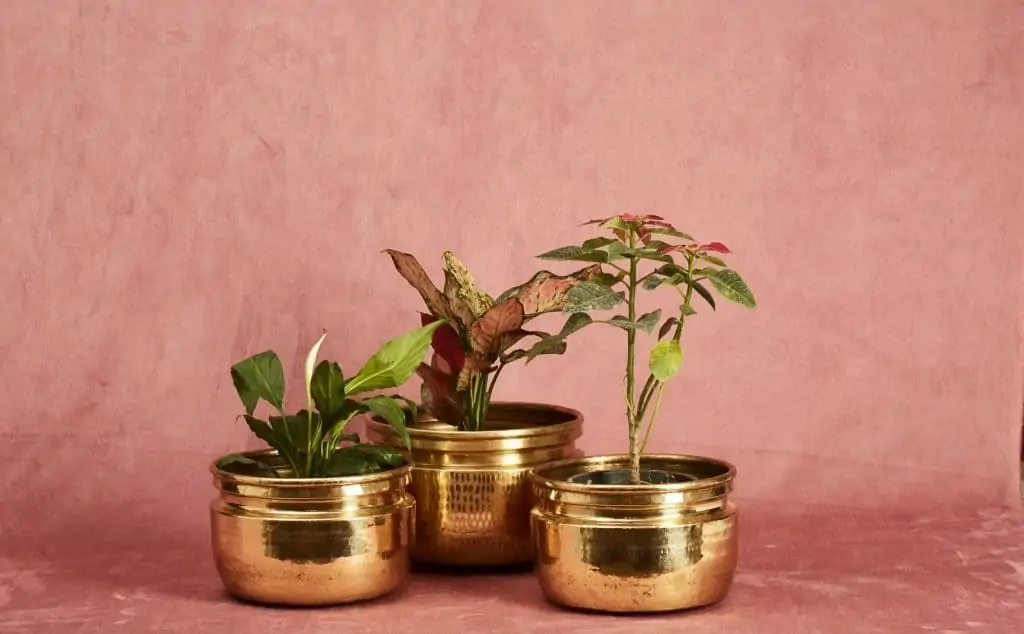
Image Source: P-tal
| B U Y H E R E |
Metal planters for indoor plants offer a unique look and can add to the beauty of the houseplant they hold. No matter your design style, you can find a metal container that compliments it.
Advantages
- You can repurpose metal items to use as plant pots. Just make a bottom drainage hole.
- Metal containers used indoors are durable, long-lasting, and attractive addition to the space.
- Available in different sizes and styles.
Disadvantages
- Depending on the type of metal, some metal containers tend to rust.
- If placed in a consistently hot and sunny spot, the container can heat the soil making it dry out quicker.
Fiberglass planter

Image Source: Jay Scotts
| B U Y H E R E |
Fiberglass planters are made by combining together fiberglass fibers with resin, resulting in the formation of a lightweight container. This allows pots to be formed in a variety of sizes and shapes.
Advantages
- Highly durable and long-lasting.
- Extremely lightweight in comparison to ceramics or terracotta.
- Available in endless sizes, shapes, and designs.
- Non-porous, holding soil moisture for longer.
Disadvantages
- Fiberglass pots can be fairly expensive.
- More brittle than plastic pots.
Jute planter
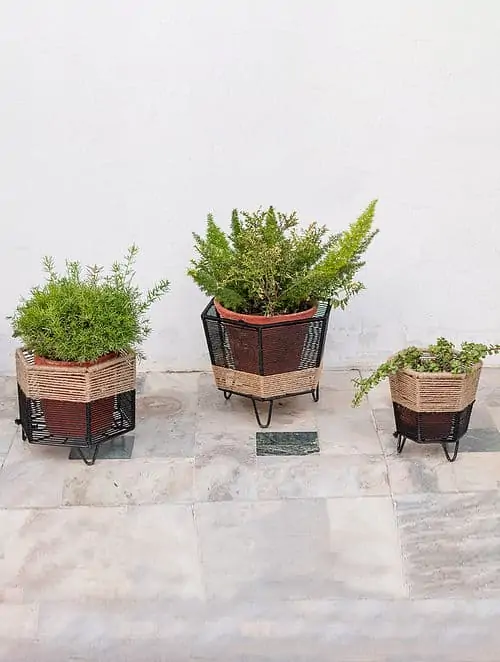
Image Source: Jaypore
| B U Y H E R E |
Jute planters are one of the most trending options available in the market today. They give the interior space a new dimension and a laid-back appeal.
These types of planters are available in the natural beige variant as well as coloured ones. Moreover, it is soft, flexible, and can be folded for storage. They have a high load-bearing capacity which helps in maintaining the stability of the plant.
Not only are jute planters visually aesthetic but also easy to move around. In addition, they can be placed on a windowsill or hung from the hook.
That said, jute planters are a great way to deck up the plants and cover up the boring plastic pots.
Hanging planters
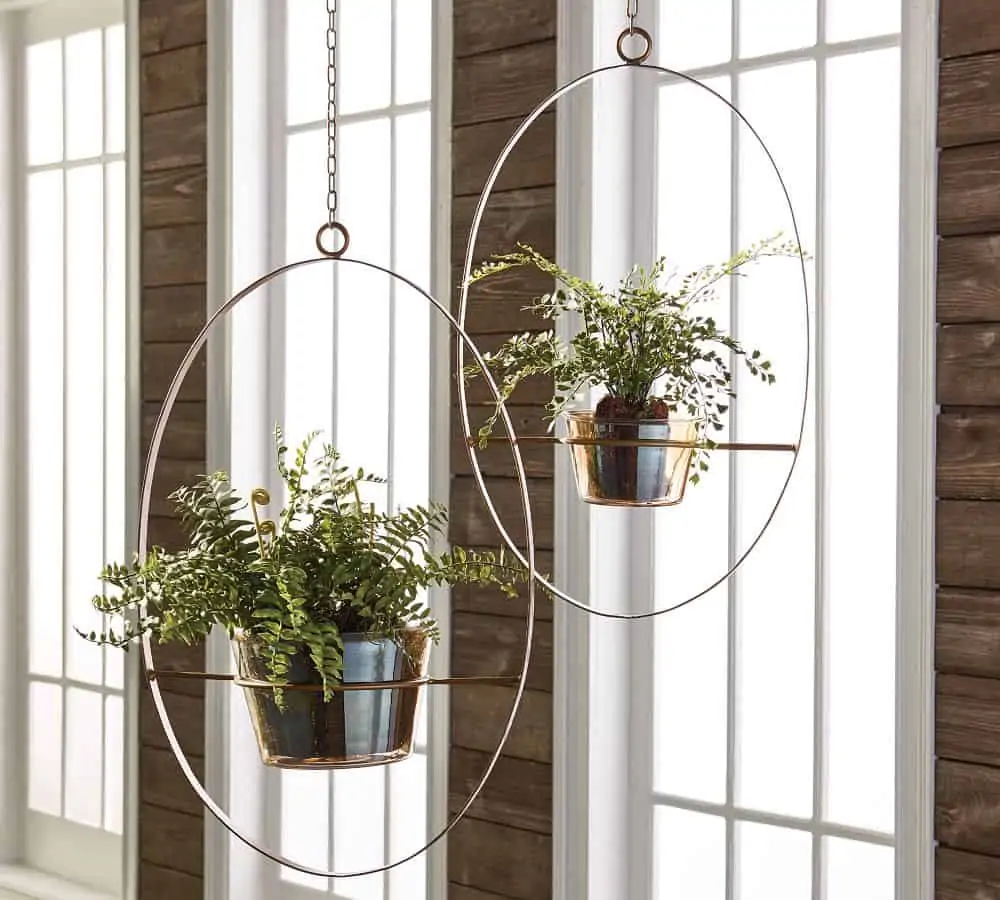
Image Source: Pottery Barn
| B U Y H E R E |
A hanging planter or hanging basket refers to a suspended container used for growing decorative plants.
Typically, hanging planters are hung for environmental enhancement. Furthermore, hanging planters are a great way to incorporate the outside elements indoors and display houseplants even where space is limited.
Hanging planters are perfect for small, compact spaces, as it uses the wall and ceiling to save on floor space. These can be used for real as well as artificial plants.
Decorating your home with indoor plants in hanging planters will add some glorious greenery to your abode. In addition, it will add a sense of height to your space. With a wide range of styles, designs, and colours to choose from, you will face no difficulty in choosing a hanging planter to suit your plant and room scheme.
Planters stand
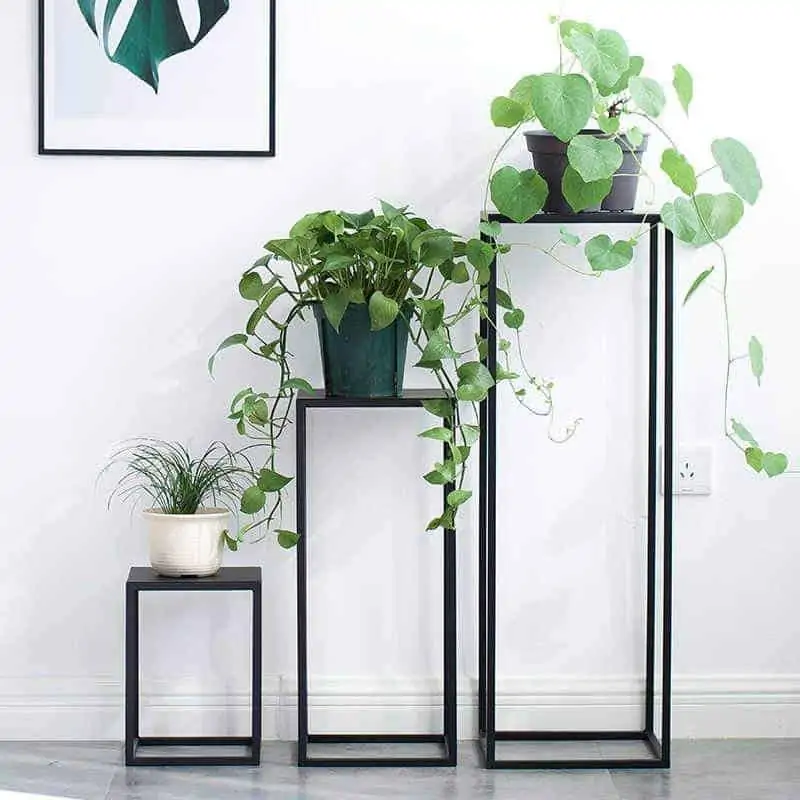
Image Source: D’sign Lab
| B U Y H E R E |
A plant stand is an excellent way to draw attention to your plant, while also lifting it off the ground. Regardless of whether you prefer traditional styles or modern, planter stands are brilliant for showcasing your blooming houseplants around the home.
These are available in a wide range of sizes and materials. Therefore, choose the one that best suits your plant’s requirements and the home’s overall theme.
Indoor plant pot size and drainage
The most important thing to consider while selecting a pot for your plant is the size of pot you need for your plant.
If you have a small to medium size plant, with a pot less than 10 inches in diameter, you want to buy a new pot that is 1-2 inches bigger in diameter than its current one.
On the other hand, if you have a larger plant, with a pot that is already over 10 inches in diameter, you must buy a pot that is 2-4 inches bigger in diameter than its current one. In addition, the same rule applies to a fast-growing plant as well.
The size of the pot matters because in a pot too large in size, soil dries slowly, making your plant more susceptible to root rot. However, in a pot too small in size, soil dries quickly and the plant exhibits stunted growth.
Avoid grouping plants of a uniform height, as it makes them all blend together. Incorporate at least one plant in each group that is noticeably taller than the rest.
Similarly, drainage is yet another important aspect of planters. If you have or are going to buy a pot without drainage, you can build your own drainage within the pot.
Since the roots of the plant cannot survive in stagnant water, a pot with drainage holes is ideal. Line the bottom of the planter with rocks to create crevices for excess water to drain into. These methods will definitely help decrease the chances of root rot.
In addition, a cachepot is yet another type of decorative pot, usually without bottom drainage, used to hold another pot holding the plant. They offer you the liberty to choose the style or appearance of your planters.
Maintenance tips for houseplants
Indoor plants add colour, texture, and warmth to the home. They are easy to grow and improve air quality. In order to thrive, they must be given due care and attention. Moreover, moving them inside the home can be tricky and takes a bit of adjustment on their part.
During this process, consider multiple factors, such as lighting and watering. Follows a list of a few useful tips to take care of your plants:-
1. Since the sugars left in the compost make it a breeding ground for flies, be careful not to tip tea and coffee into planters.
2. Use trough planters as natural screens. They reduce noise and act as barriers to separate walkways etc.
3. One of the most common causes of plants not thriving is over-watering. Hence, make the client aware of this for better growth of the plants.
4. Use peat-free compost for all your indoor plants.
5. Variegated plants (featuring leaves with white edges or white flecks) need more light than other plants. Therefore, keep them near a window so that they can get all the light that they need.
6. Plants adapt to different surroundings slowly by changing their leaf orientation and structure. If possible, try not to move them around.
7. Regularly prune your plants to stop them from becoming ‘leggy’. Once they’ve lost the foliage on their lower branches, it’s very difficult to get it to return.
Interior decoration with houseplants
The addition of indoor plants impacts your home in a positive, creating a peaceful environment. You can display greenery inside the home from plant stands, wall planters, and vertical gardens to hanging pots from the ceiling.
Whether opting for a tropical look or a bohemian style, potted plants fulfill your desires and aspirations.
Tips to enhance interior design using potted plants
1. Determining the amount of natural light each room gets. Additionally, understanding if a particular plant thrives in low, medium, or bright light.
2. When you can, group plants in an odd number such as three, five, and seven. Using an even number can look symmetrical, making the arrangement look more formal. Moreover, odd numbers give a more casual look.
3. Place the tall plants in areas, such as a corner or staircase landing.
4. Group together plants with different widths and heights. The difference in size gives a more organic look than plants of the same size.
5. When deciding where to place a floor plant, make sure the size and scale of the plant make sense in the room. A 6 or 7-foot plant is considered ideal for most residential spaces.
6. Turn houseplants into a focal point in your bedroom by hanging them above the windows.
7. If the homeowners aren’t good at caring for the plants, dried stems and flowers can be a simple and sculptural option to decorate their homes.
8. Transform a reading nook into a hideaway with a large potted plant and some hanging greenery. Just make sure the space gets plenty of natural light so that the plants can thrive.
9. Compliment your design style by using decorated cachepots.
10. Using a combination of cachepots, plant stands, or tables, place your potted plants by a stairway.
11. Fill spaces on bookshelves, windowsills, and tables with appropriately sized houseplants, to create an organic feel.
12. Use taller plants and raised planters to highlight your plants and complement your decor and furniture.
13. Use various sizes and styles of containers mixed together in one location, placing the taller ones in the back and smaller ones in the front.
Enhance your decor with Vertical Gardens

Image Source: The National
A vertical garden is a vertically built structure used to grow plants. Intentionally covered by vegetation, a vertical garden or green wall uses a vertically suspended panel or growth medium. These unique structures are also known as living walls.
Vertical gardens can either be freestanding or attached to a wall. These are often constructed of modular panels that hold a growing medium and give a pop of greenery to modern-day homes.
While potted plants have the advantage of being placed anywhere, they can take up space and require lots of maintenance. However, with vertical gardens, there is only one large panel to maintain.
Mostly found in urban environments, vertical gardens help reduce the overall temperatures of the building as well.
Best Vastu plants
Plants help detoxify the environment by absorbing carbon dioxide. Hence, Vastu Shastra recommends choosing houseplants with utmost care placing them in the right direction. This ensures the positivity as well as the well-being of the residents hosting them.
Amongst the different plants suggested in Vastu, the money plant stands right at the top of the list. A money plant has paramount significance in Vastu Shastra, as enables positive energies to flow in the house.
In addition, Vastu recommends discarding the rotting and decaying leaves of the plants as they represent death and attract negative energy. Plants placed in the east or northeast direction must be smaller in size, not more than 3 feet.
Except for roses, cactus bonsai, and other thorny plants must be removed from the house as they bring in negative energy. They could bring in bad luck. However, if the client’s preference is a cactus, in particular, try to incorporate it outdoors.
Below follows a comprehensive list of the 10 best Vastu plants:-
Money plant
Image Source: My Domaine
Common name: Pothos or Money plant
Botanical name: Epipremnum aureum
The money plant is characterized by its green and glossy, heart-shaped leaves. Additionally, it is known to bring wealth and abundance to the house.
So, Vastu recommends keeping the money plant in the southeast direction of the living room to attract fortune.
Holy basil
Image Source: Dr. Josh Axe
Common name: Tulsi
Botanical name: Ocimum tenuiflorum
Holy Basil or tulsi holds religious as well as medicinal significance in Hindu culture. It is grown to promote well-being and maintain positive energy.
Therefore, Vastu recommends keeping the holy basil in the northeast location.
Lucky bamboo
Image Source: Flickr
Common name: Curly bamboo
Botanical name: Dracaena sanderiana
Lucky bamboo looks stunning on living room tables as well as office desks. Also, it invites good luck and positive vibes to your home.
So, Vastu recommends keeping the lucky bamboo in an east-corner location of the home.
Aloe vera
Image Source: Succulents Box
Common name: Aloe
Botanical name: Aloe barbadensis miller
Aloe vera is a medicinal plant that requires minimal watering and care. Moreover, it helps in purifying the air by removing harmful toxins from the environment.
Thus, Vastu recommends keeping aloe vera in the east or north direction for the well-being of family members.
Snake plant
Image Source: Leon & George
Common name: Mother in law’s tongue
Botanical name: Dracaena trifasciata
Snake plant is fairly easy to grow and removes harmful toxins from the air. Moreover, it thrives best in ceramic pots.
Vastu recommends keeping the snake plant in the east, south, or southeast direction to bring in positive energy.
Banana
Image Source: Harlowe James
Common name: Banana
Botanical name: Musa
Banana is one of the most auspicious Vastu plants. Various cultures in India worship it during religious ceremonies.
Vastu recommends keeping the banana plant in the north or northeast location of the house.
Peace lily
Image Source: Among the Lilacs
Common name: Peace lily
Botanical name: Spathiphyllum wallisii
Peace lily plants represent love, peace, and harmony at home.
Therefore, Vastu recommends keeping peace lily plants in the bedroom to promote peace and harmony.
Lavender
Image Source: Country Interiors
Common name: Lavender
Botanical name: Lavandula
Known for its soothing fragrance and delightful appearance, lavender is a beautiful, aromatic, herbal shrub.
So, Vastu recommends placing them in your bedroom as they offer relaxing sleep.
Peony
Image Source: Primrose Hall
Common name: Garden peony
Botanical name: Paeonia
Peony is considered to be the epitome of value, peace, positivity as well as optimism.
Thus, Vastu recommends keeping peony plants in the southwest direction of the house to bring in optimistic energy.
Jasmine
Image Source: Gardening Know How
Common name: Mogara
Botanical name: Jasminum
Jasmine plants reduce anxiety. Additionally, their sweet fragrance and white flowers bring peace and tranquility.
Vastu recommends keeping the jasmine plants in the east, north, or near a south-facing window to attract positive vibes.
Best pots for indoor plants (Click on the link below to buy)
Looking to get your hands on some of these? Where do you find the best collection of indoor plants, planters, and stands to decorate your home? Well, the answer is right here.
We have handpicked a few of the best designs to elevate your interior space.
Indoor plant Pot by Modenese Gastone
| B U Y H E R E |
Jed Tall Planter in White High Gloss by Burke Decor
| B U Y H E R E |
Bau Indoor Pot by Ferm Living
| B U Y H E R E |
High indoor plant pot By Hobby Flower
| B U Y H E R E |
Hourglass Indoor Plant Pot by Burke Decor
| B U Y H E R E |
ANDROMEDA Round Pot by BLOSS
| B U Y H E R E |
SavvyCube by Saviesa
| B U Y H E R E |
DRY Metal pots by BLOSS
| B U Y H E R E |
Indoor Planters by Koberg
| B U Y H E R E |
Peypin Tall Round Indoor Planter by Jay Scotts
| B U Y H E R E |
Pots for indoor plants: Decor inspiration and ideas
-
#1 Image Source: Archi Products
-
#2 Image Source: Jaypore
-
#3 Image Source: Pottery Barn
-
#4 Image Source: Pottery Barn
-
#5 Image Source: Pennoyer Newman
-
-
#7 Image Source: Mora Taara
-
#8 Image Source: The Purple Turtles
-
#9 Image Source: CHUMBAK
-
#10 Image Source: Mora Taara
-
#11 Image Source: Mora Taara
-
#12 Image Source: Jaypore
-
#13 Image Source: Nicobar
-
#14 Image Source: Jaypore
-
#15 Image Source: Crate&Barrel
-
#16 Image Source: Monnaie Architects and Interior Designers
-
#17 Image Source: PRISM
-
#18 Image Source: Archi Products
-
#19 Image Source: Archi Products
-
#20 Image Source: Archi Products
-
#21 Image Source: Behance
-
#22 Image Source: HomeWorldDesign
-
#23 Image Source: Zameen
-
#24 Image Source: Ambius Shop
-
#25 Image Source: Jaypore
-
#26 Image Source: Crate&Barrel
-
#27 Image Source: Crate&Barrel
-
#28 Image Source: Jaypore
-
#29 Image Source: Jaypore
-
#30 Image Source: Jaypore
-
#31 Image Source: Crate&Barrel
-
#32 Image Source: Crate&Barrel
-
#33 Image Source: Elite Earth
-
#34 Image Source: Jaypore
-
#35 Image Source: Burke Decor
Conclusion
You can start small, with just one or two plants like bonsai or money plant in a ceramic pot on side tables in your house, or you can go all out and create your own vertical garden filled with dozens of different plants.
A wide variety of choices in pot materials such as terracotta pots, plastic, and ceramic pots, sizes, and styles are available. Therefore, your selection depends on the plant’s moisture preferences and size. In general, use clay and unglazed ceramic pots for plants that prefer fast-draining soil. On the other hand, use plastic, metal, or glazed ceramic pots for plants that require a moist environment.
Picking the right pot for your plant may be an easy task once you learn the basic rules of thumb; size, materials, and drainage requirements.
However, it can be tricky to pick a pot that complements the plant and the home’s overall theme. Match the plants and pots on the basis of their visual characteristics. Furthermore, the combination of plant and pot together needs to suit your home decor.
No matter how beautifully you arrange indoor plants, things start to look pretty ugly if their basic needs like light and humidity remain unfulfilled. So, make sure your plants get adequate light. In addition, don’t place them too close to air vents, heaters, or ACs.
Lastly, choose the right Vastu plants for home needs to avail maximum benefits along with positive vibes.





